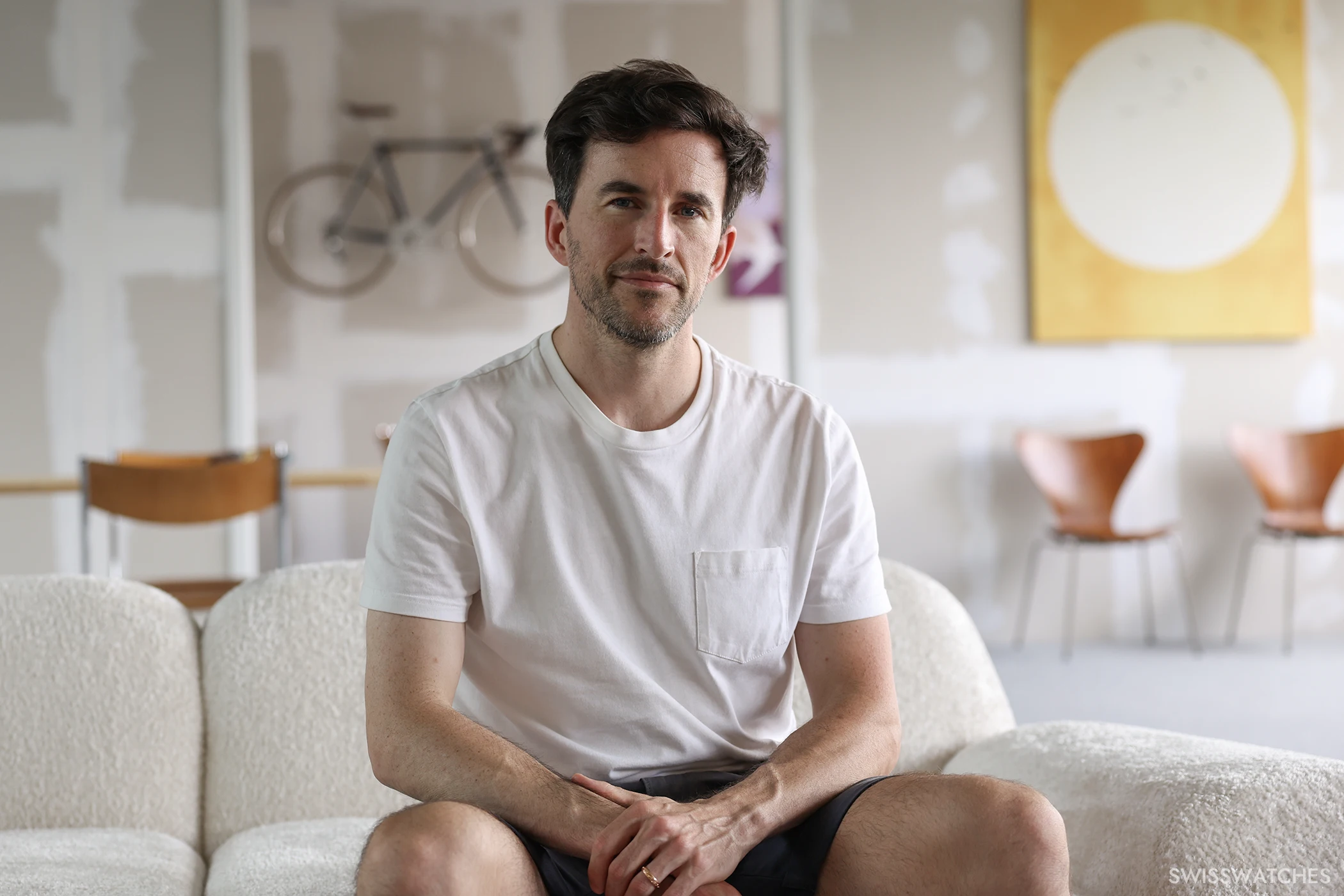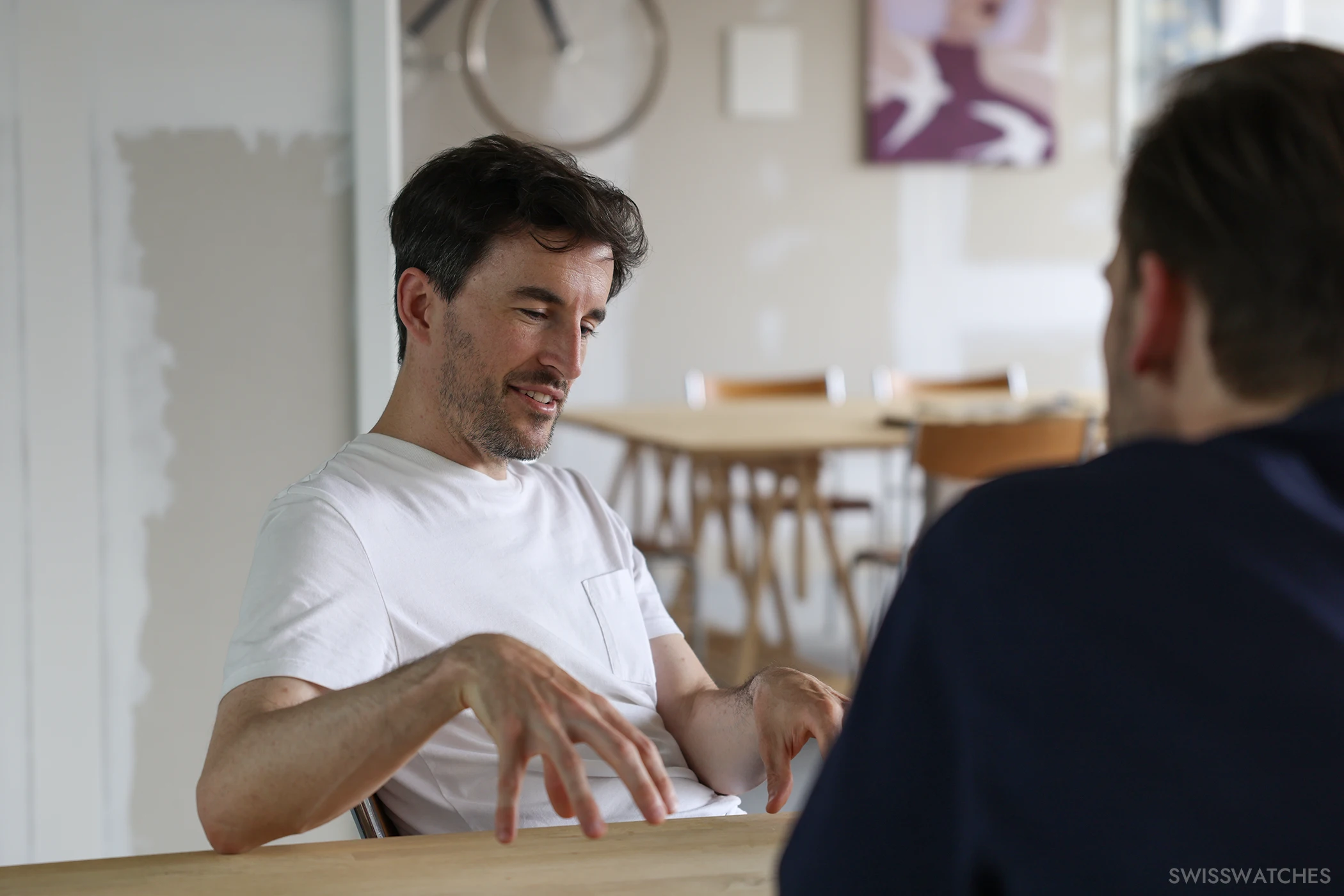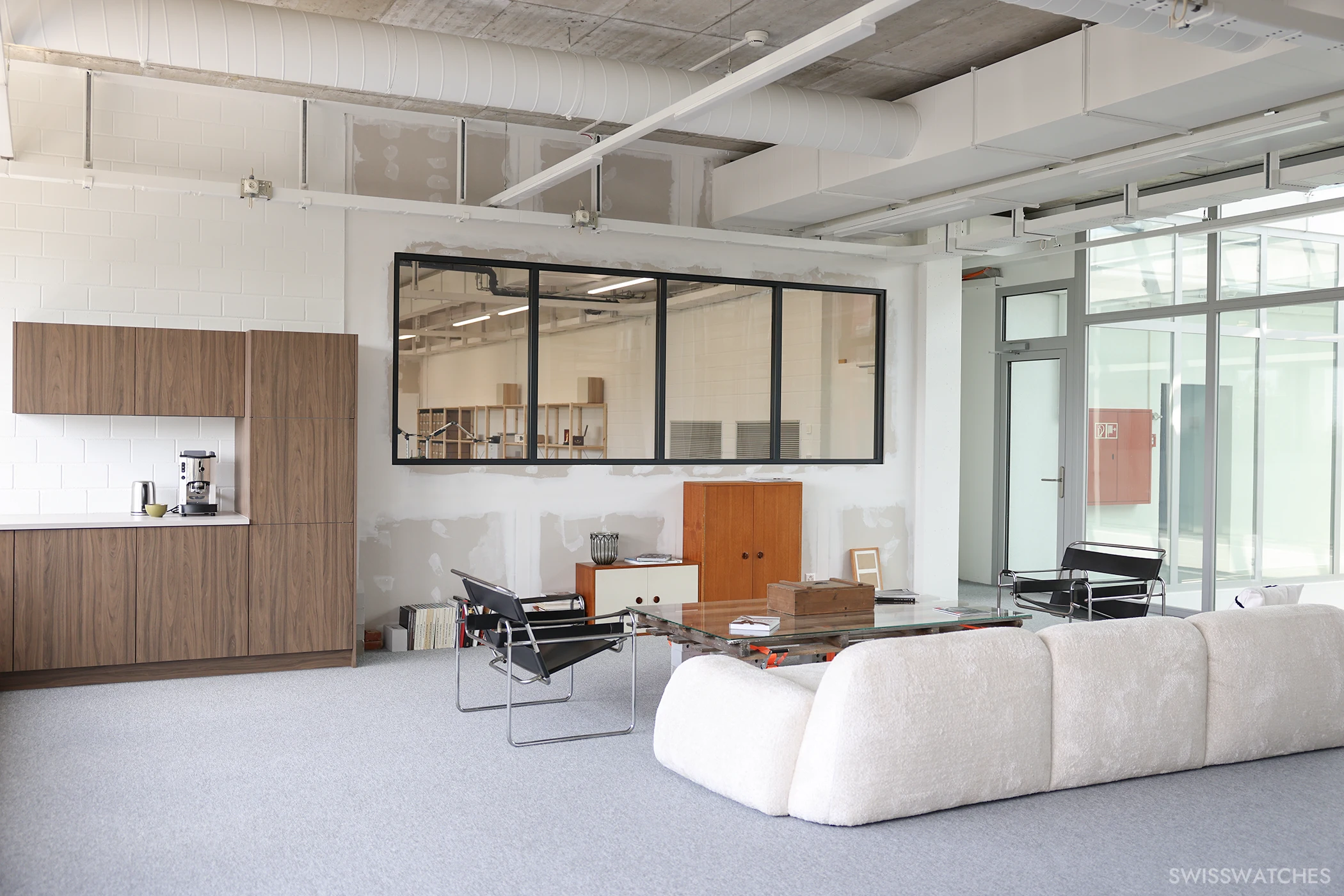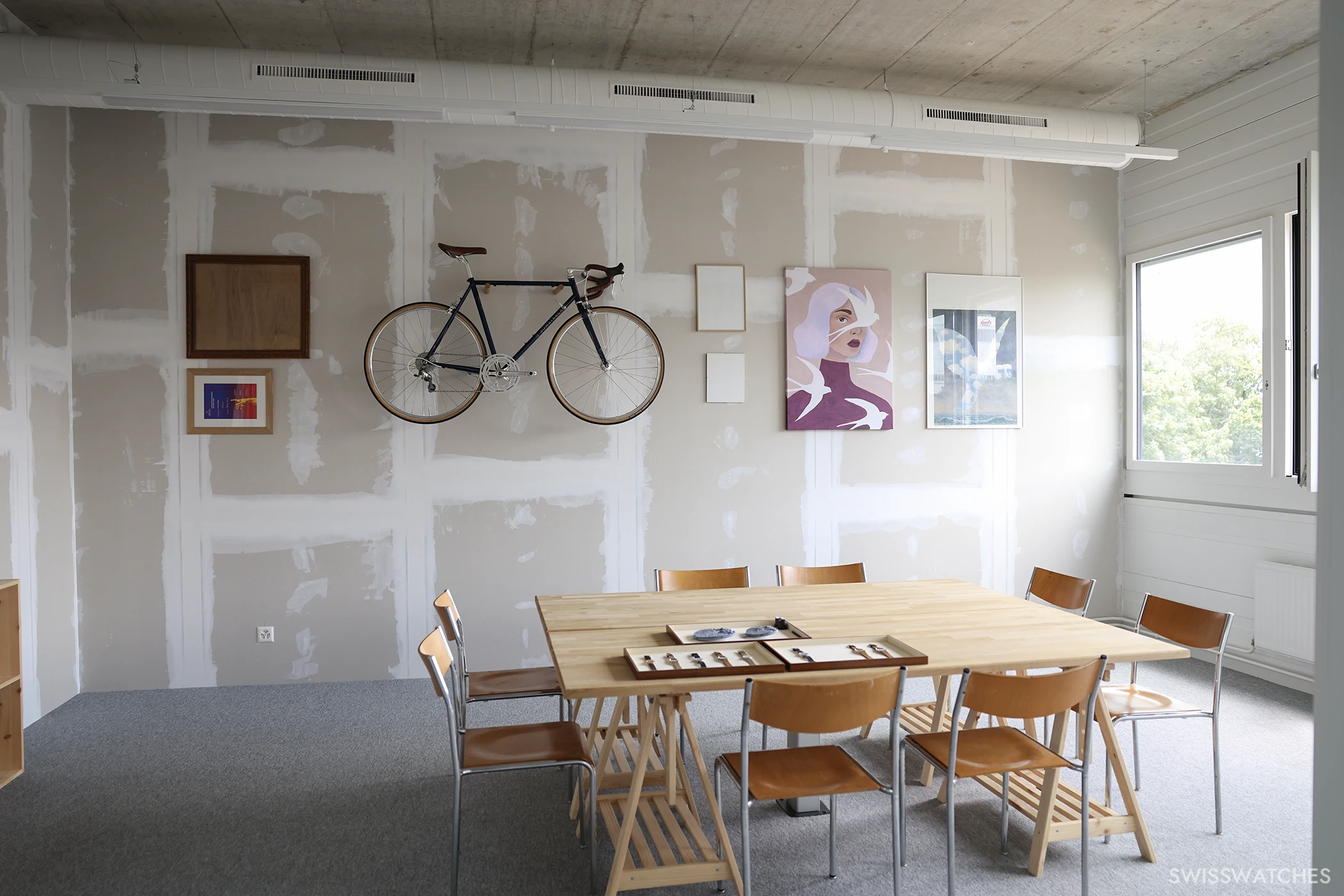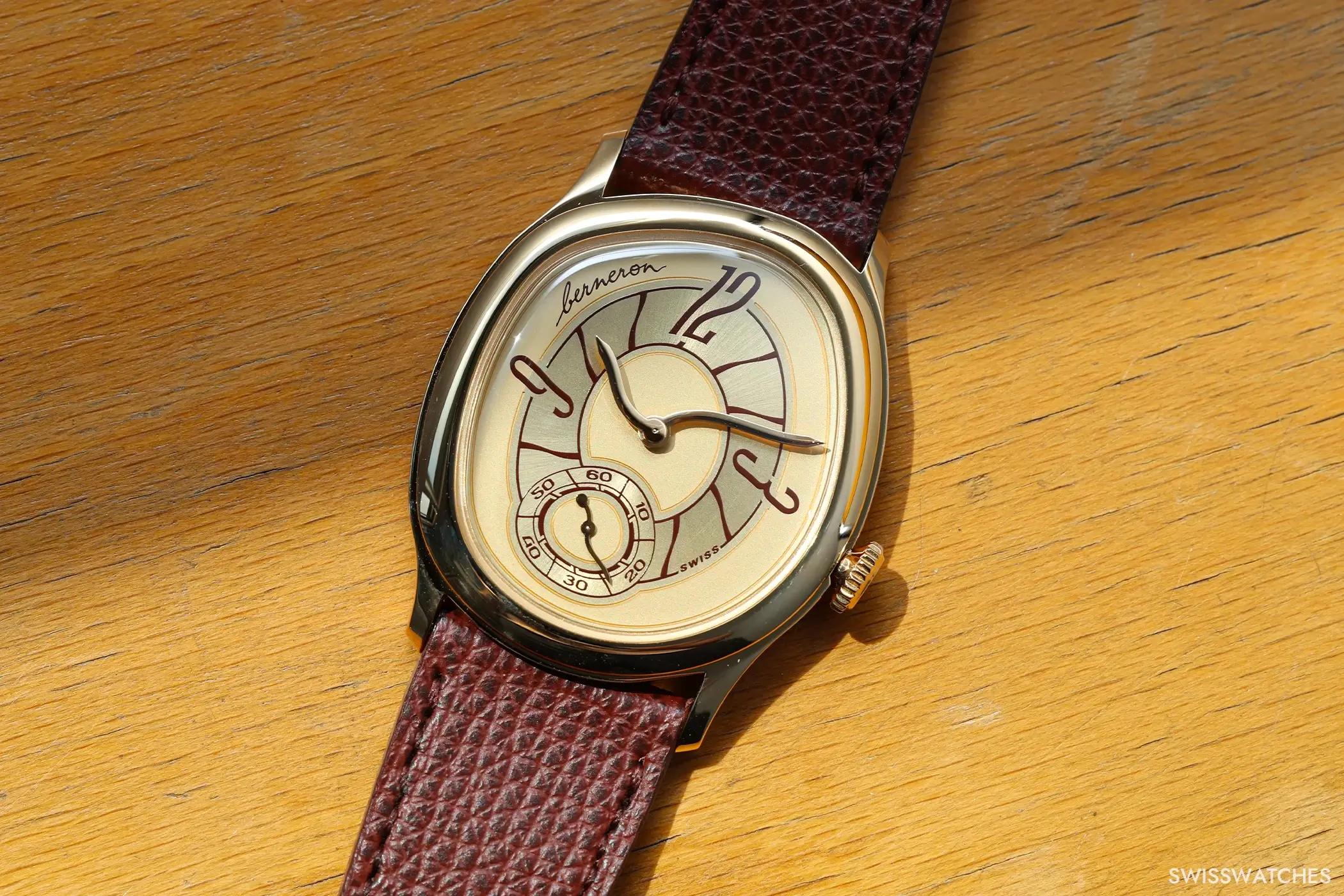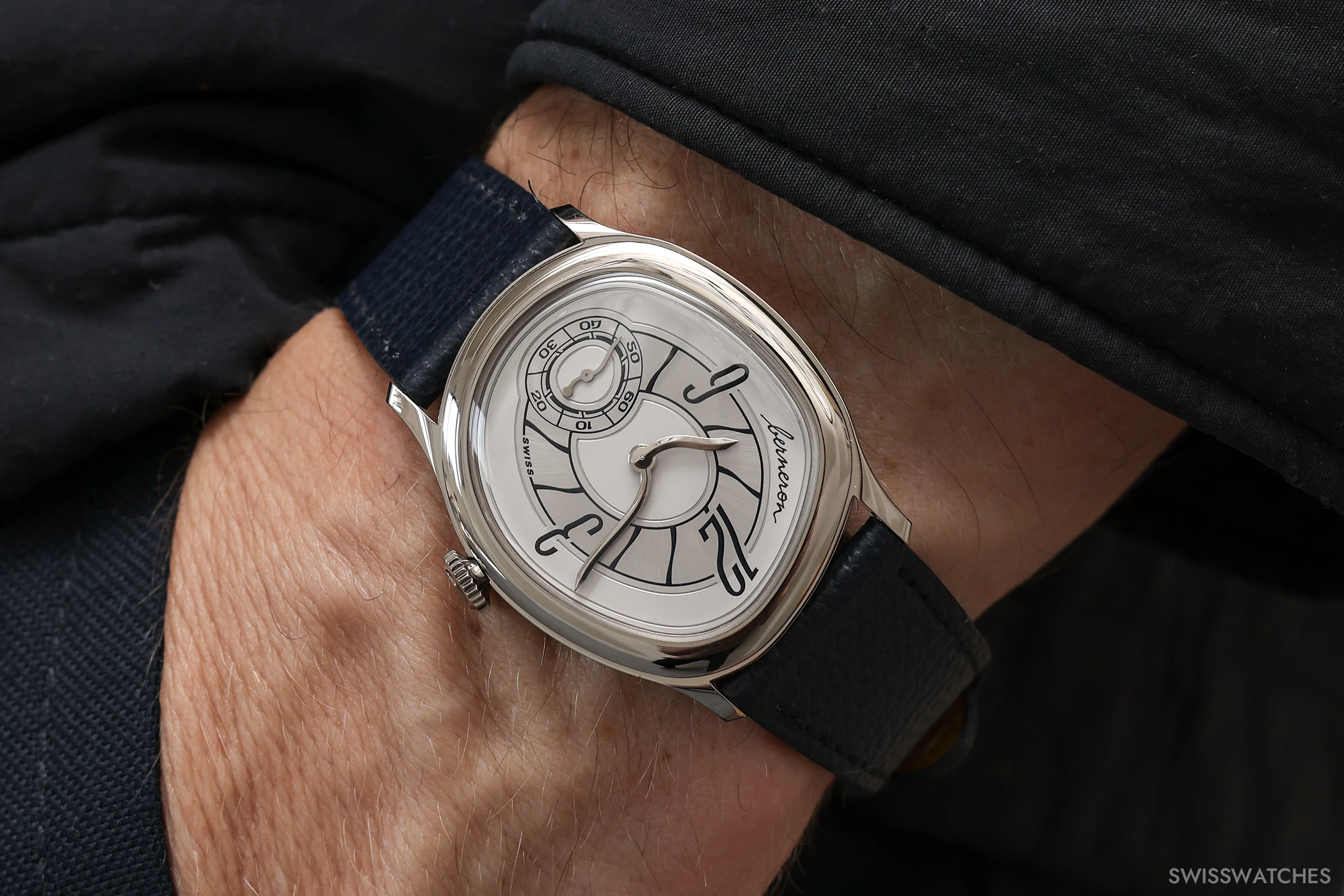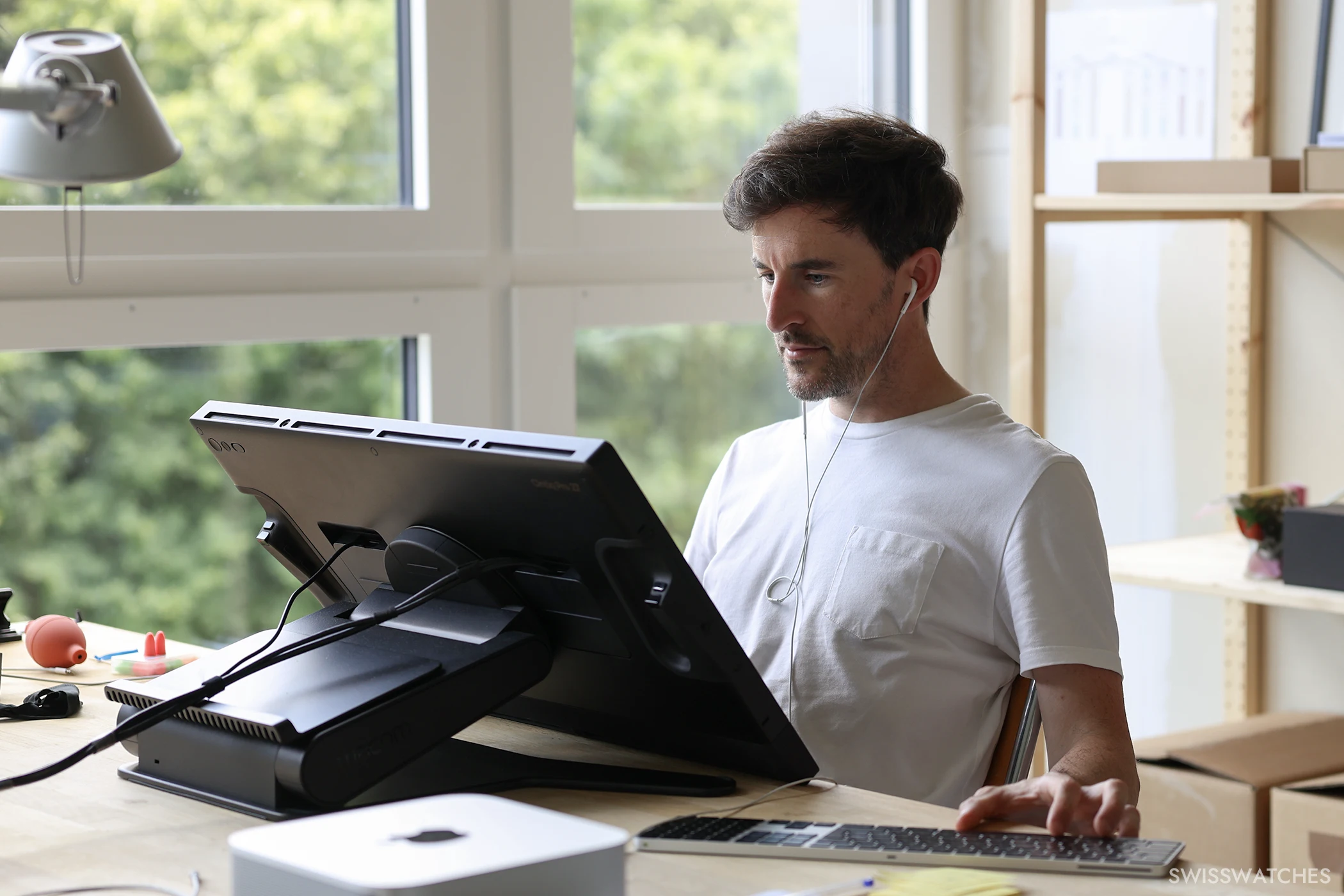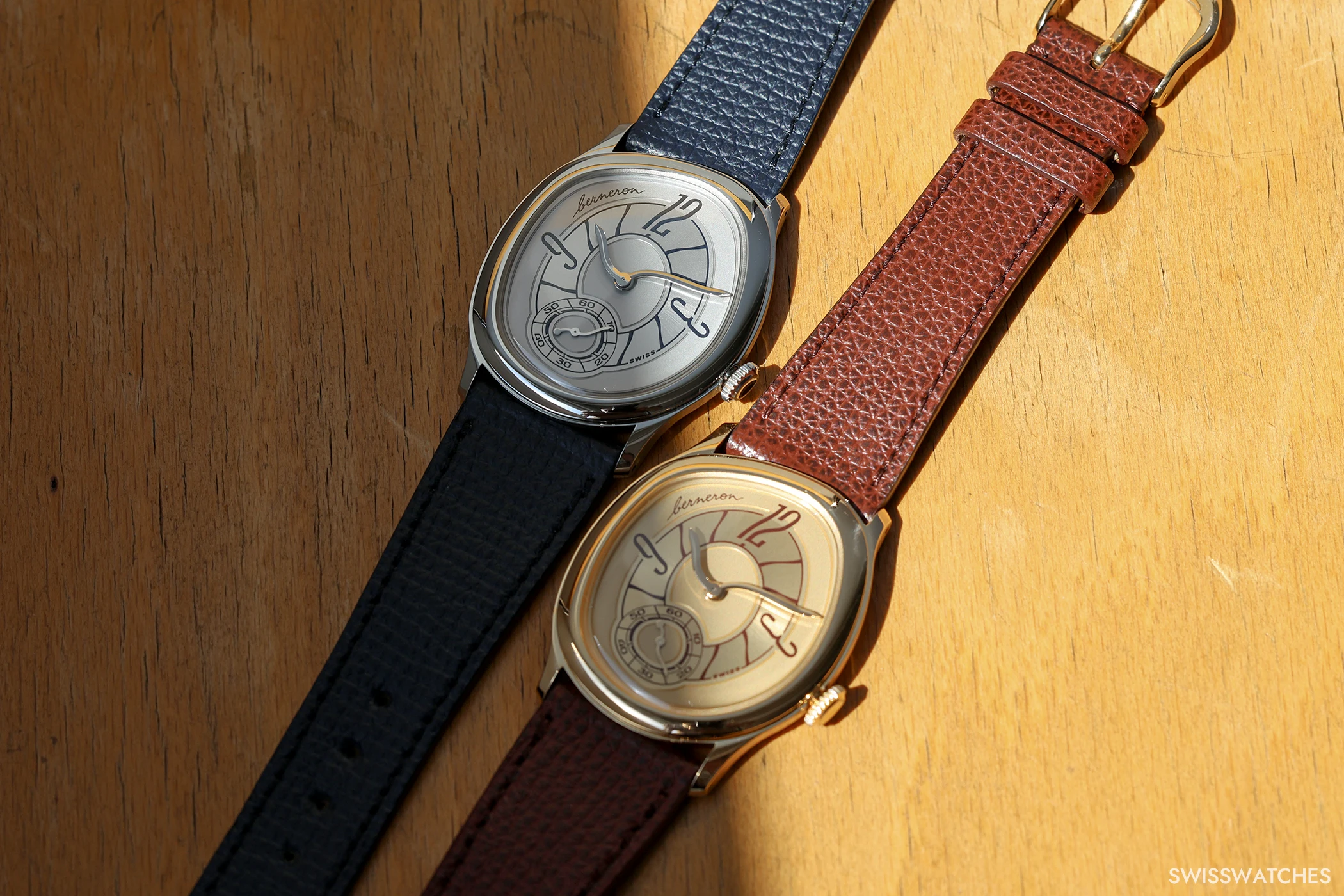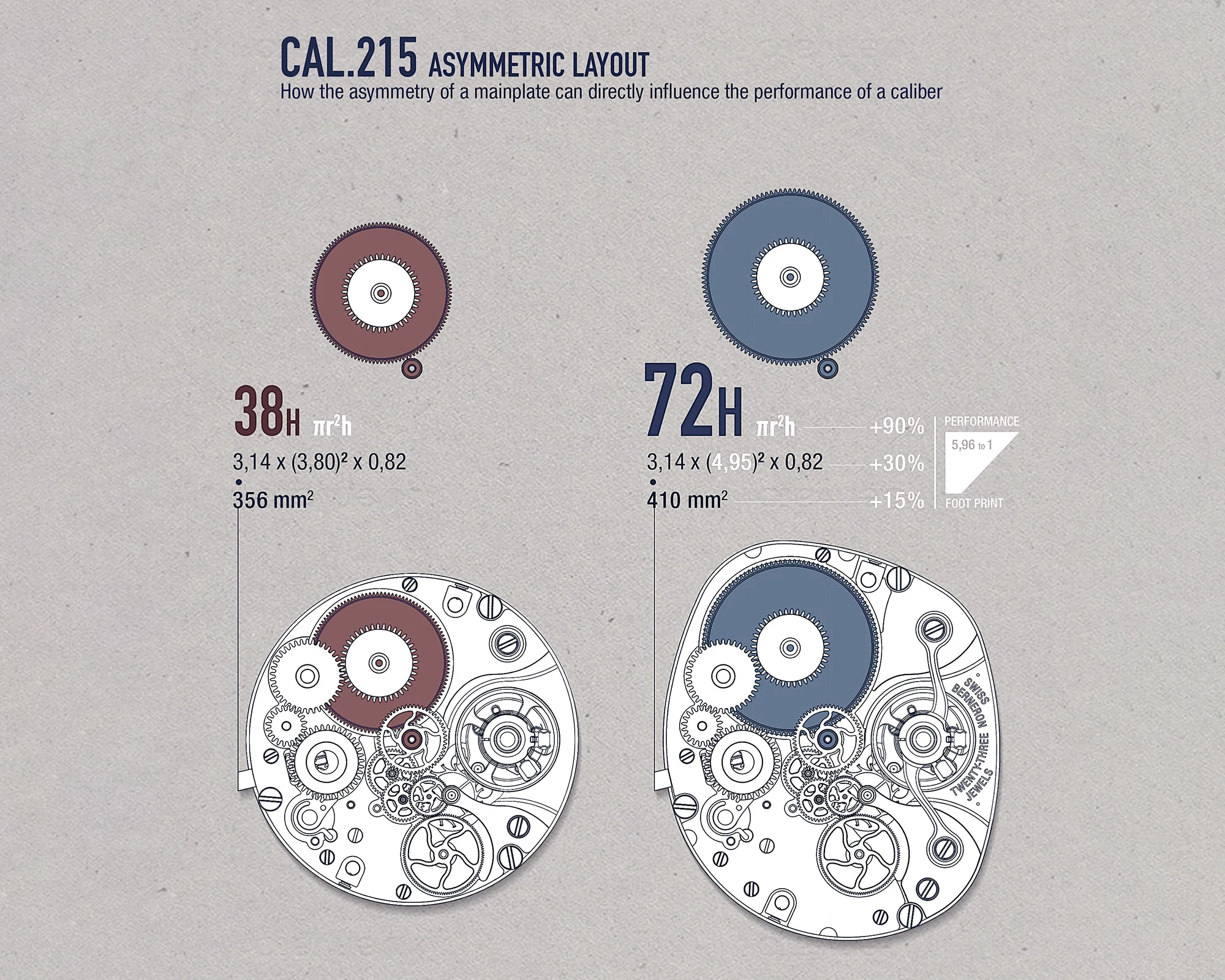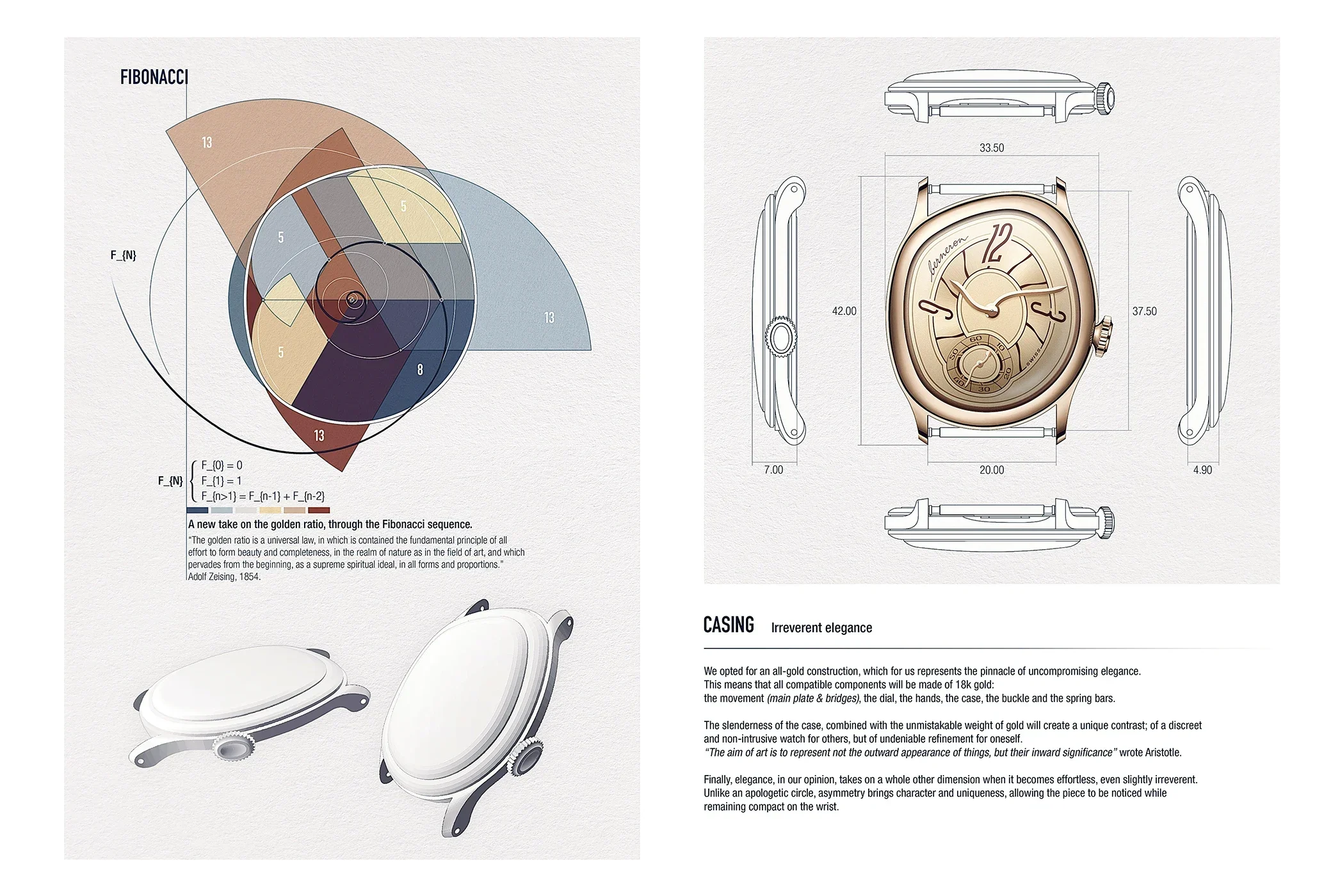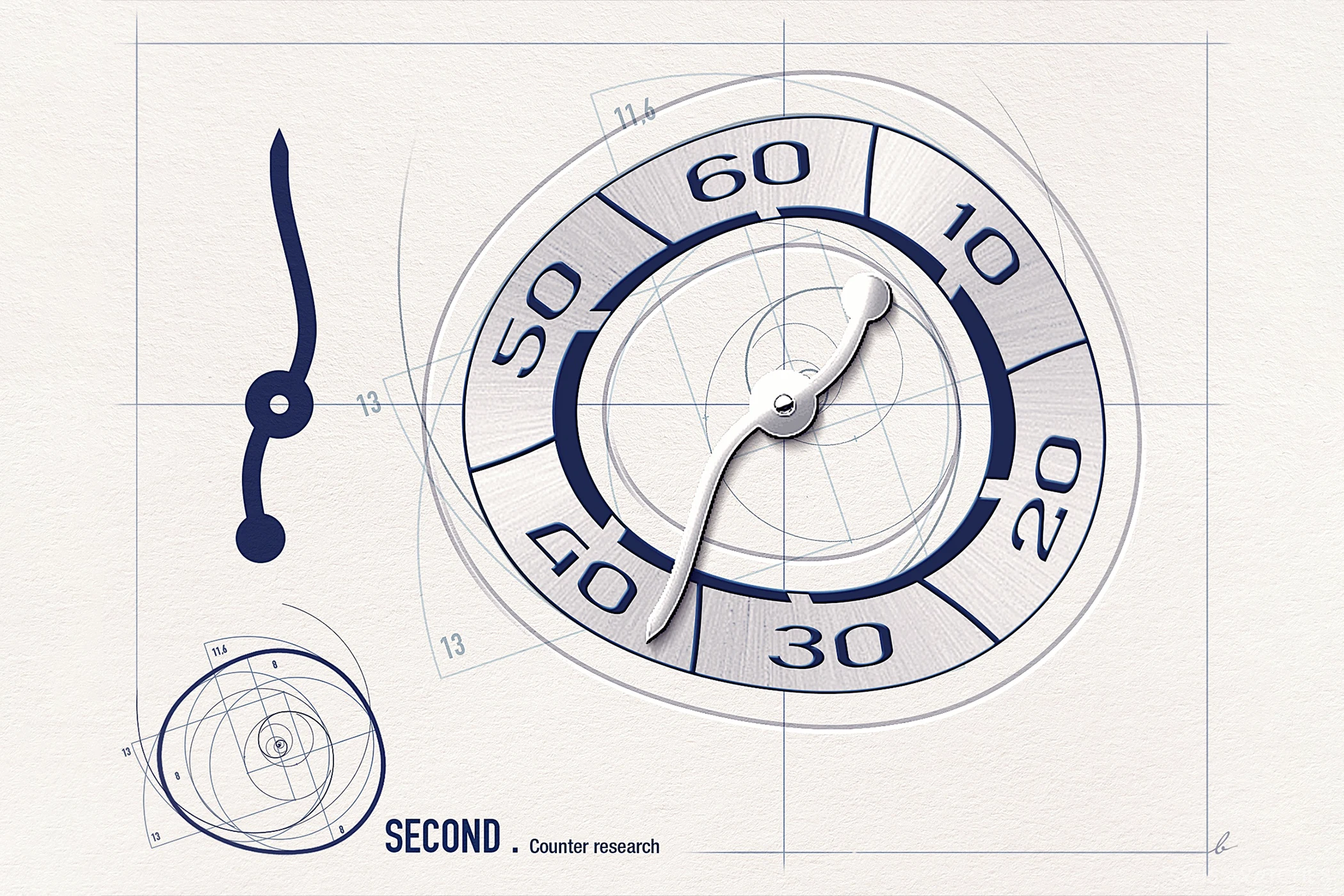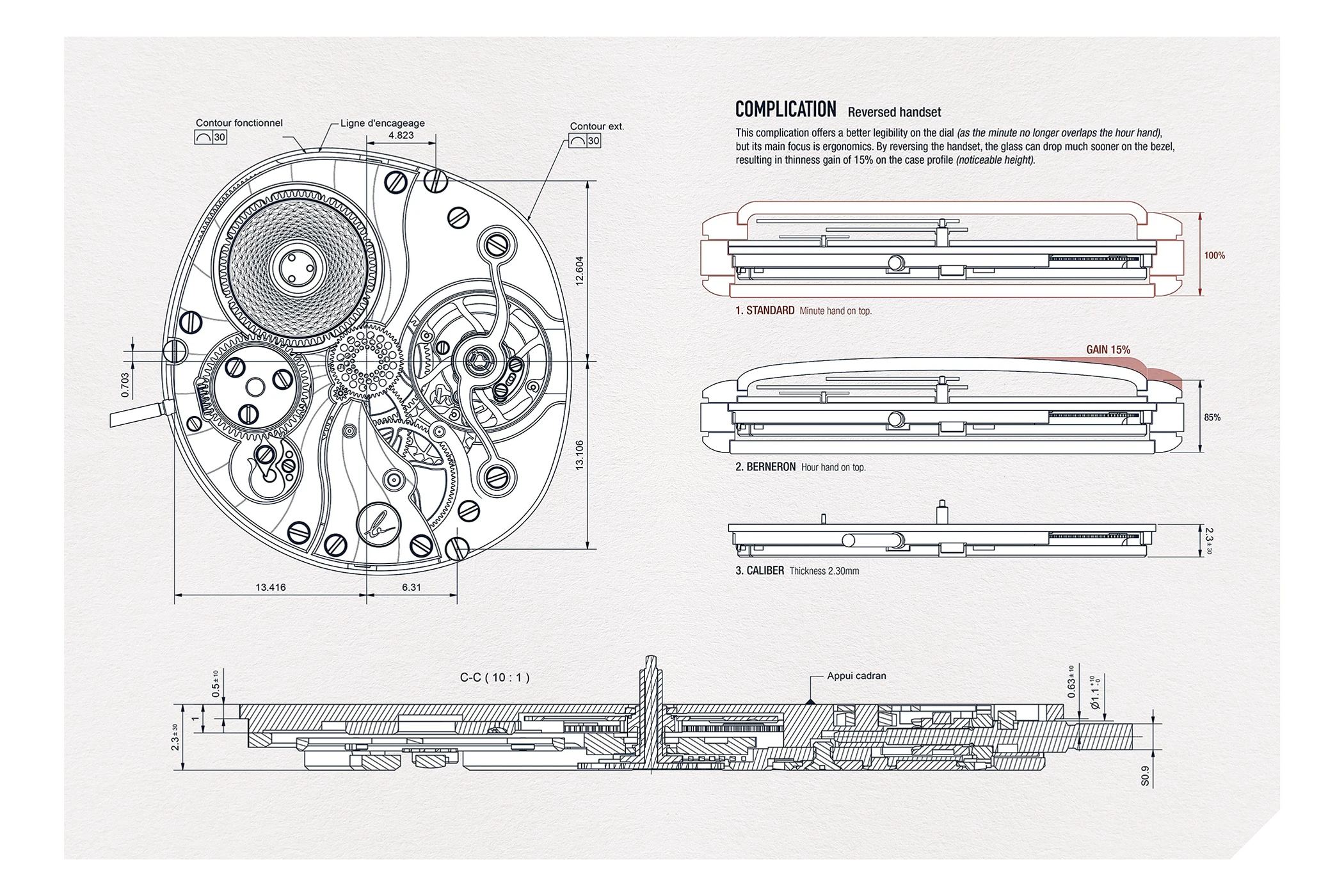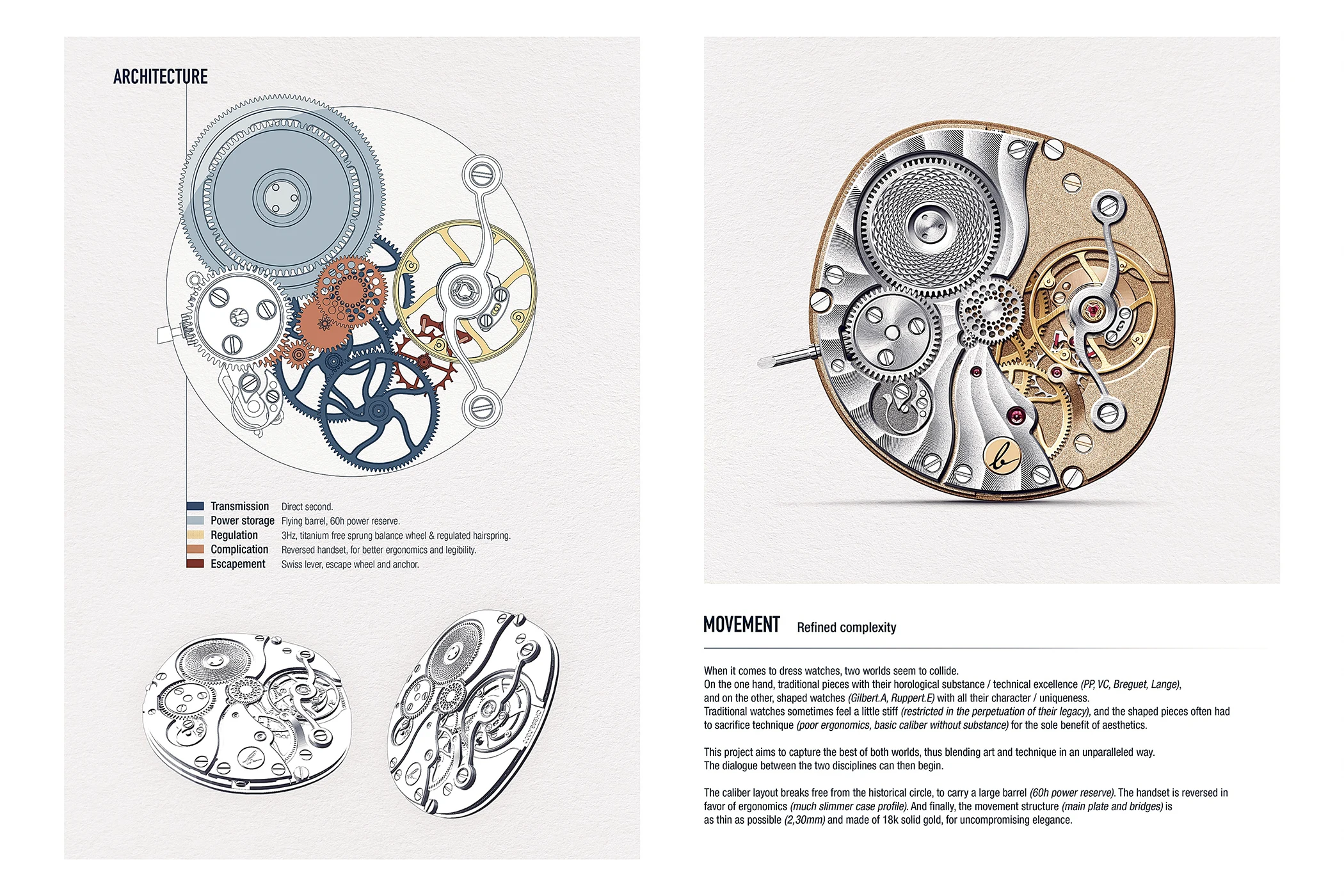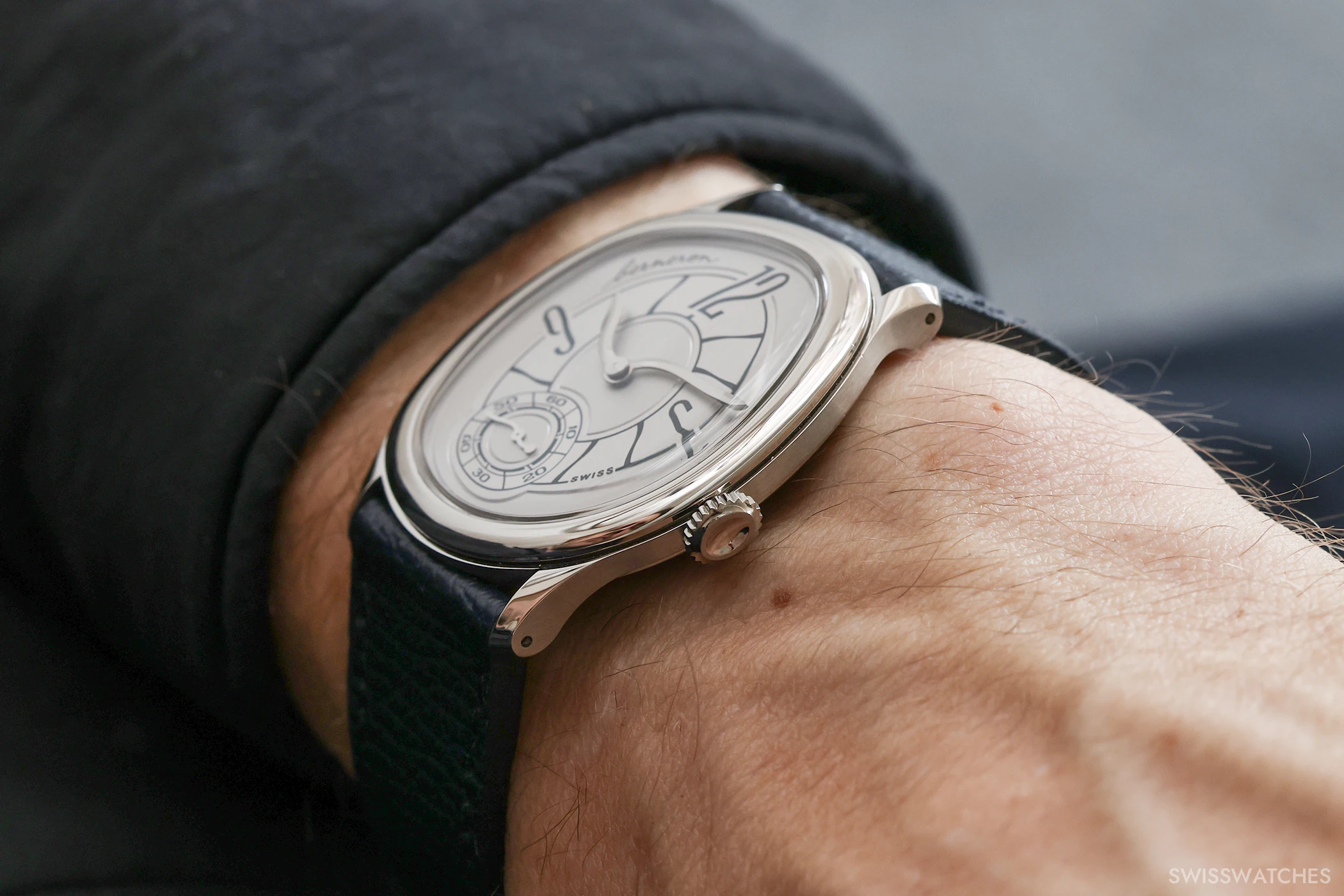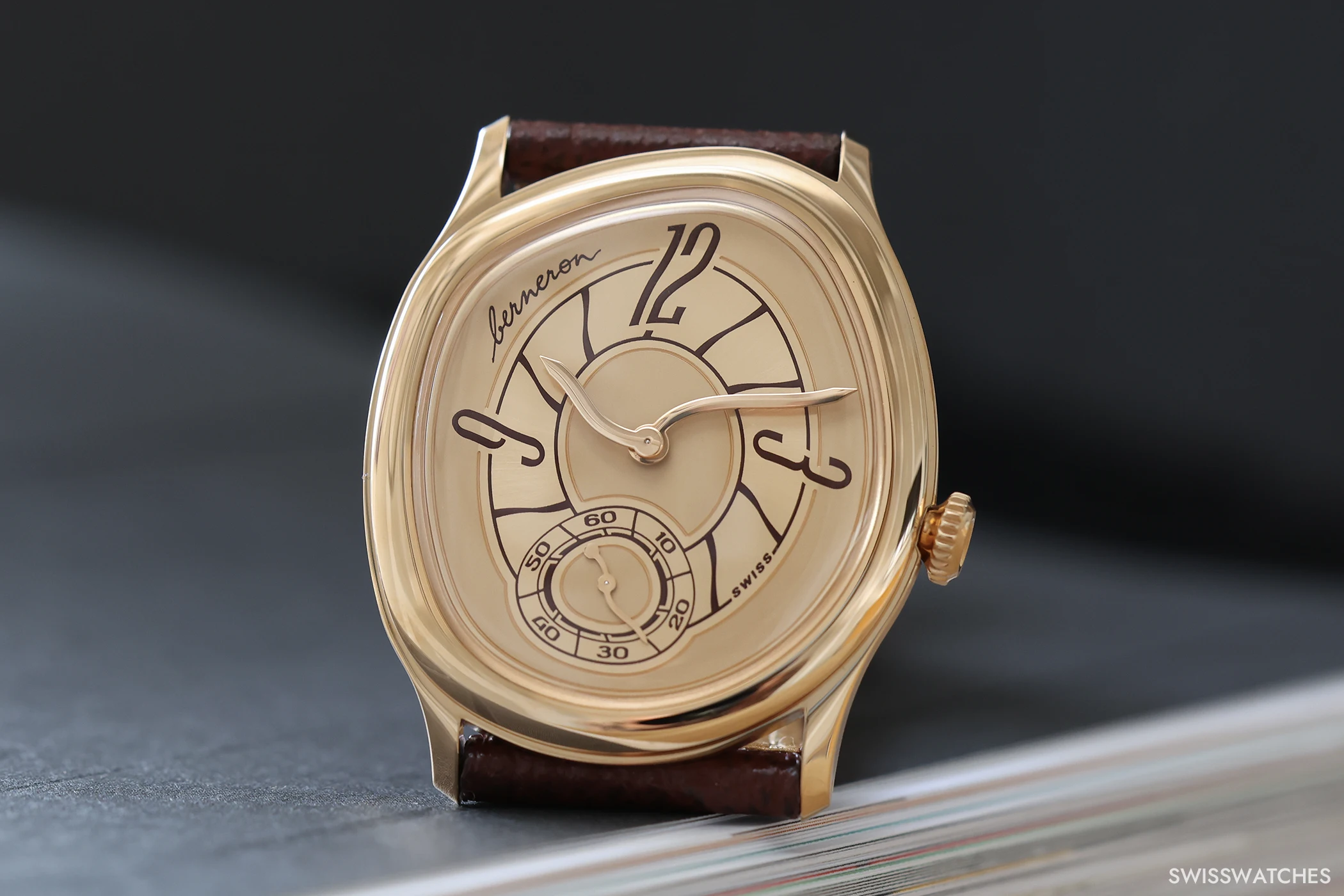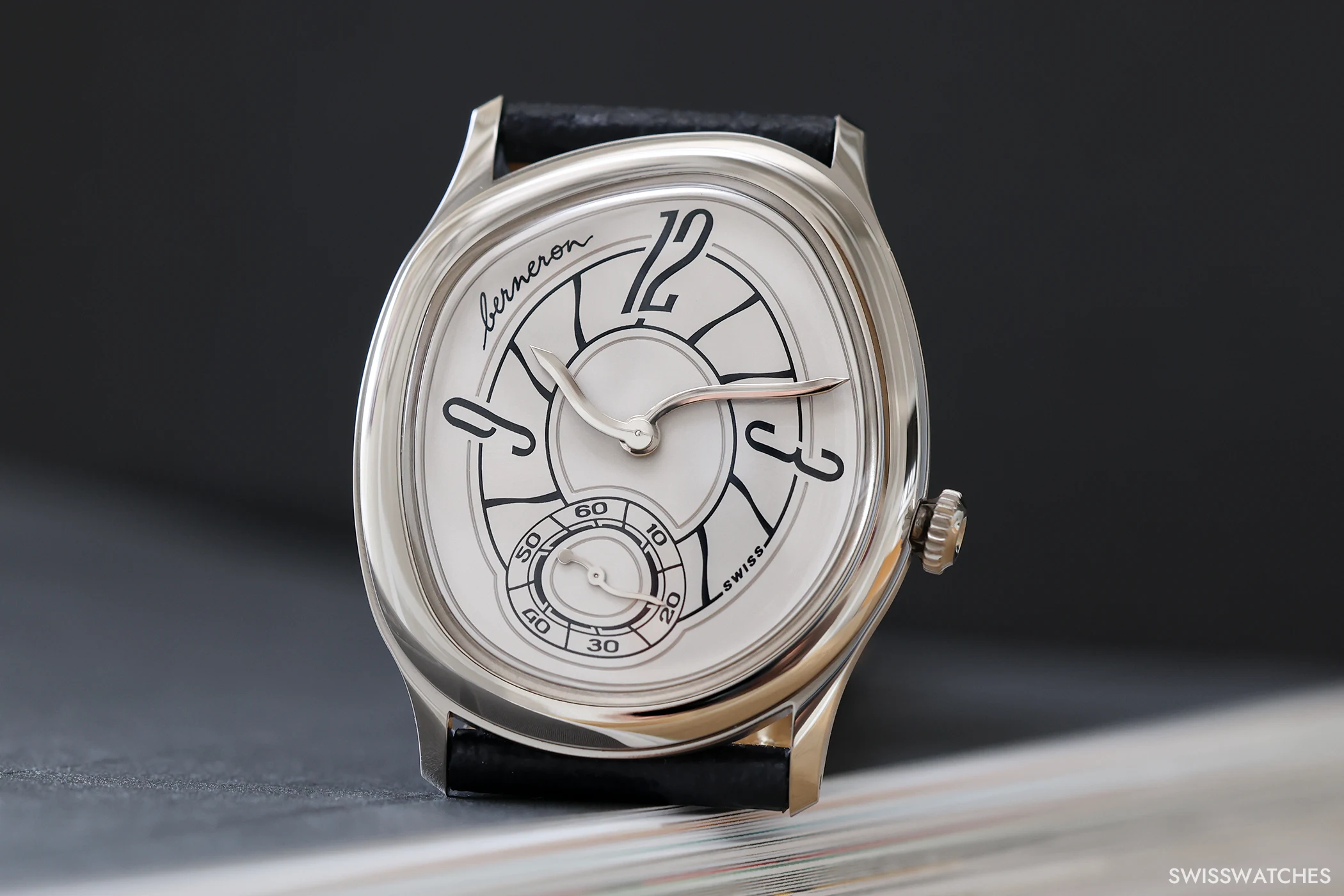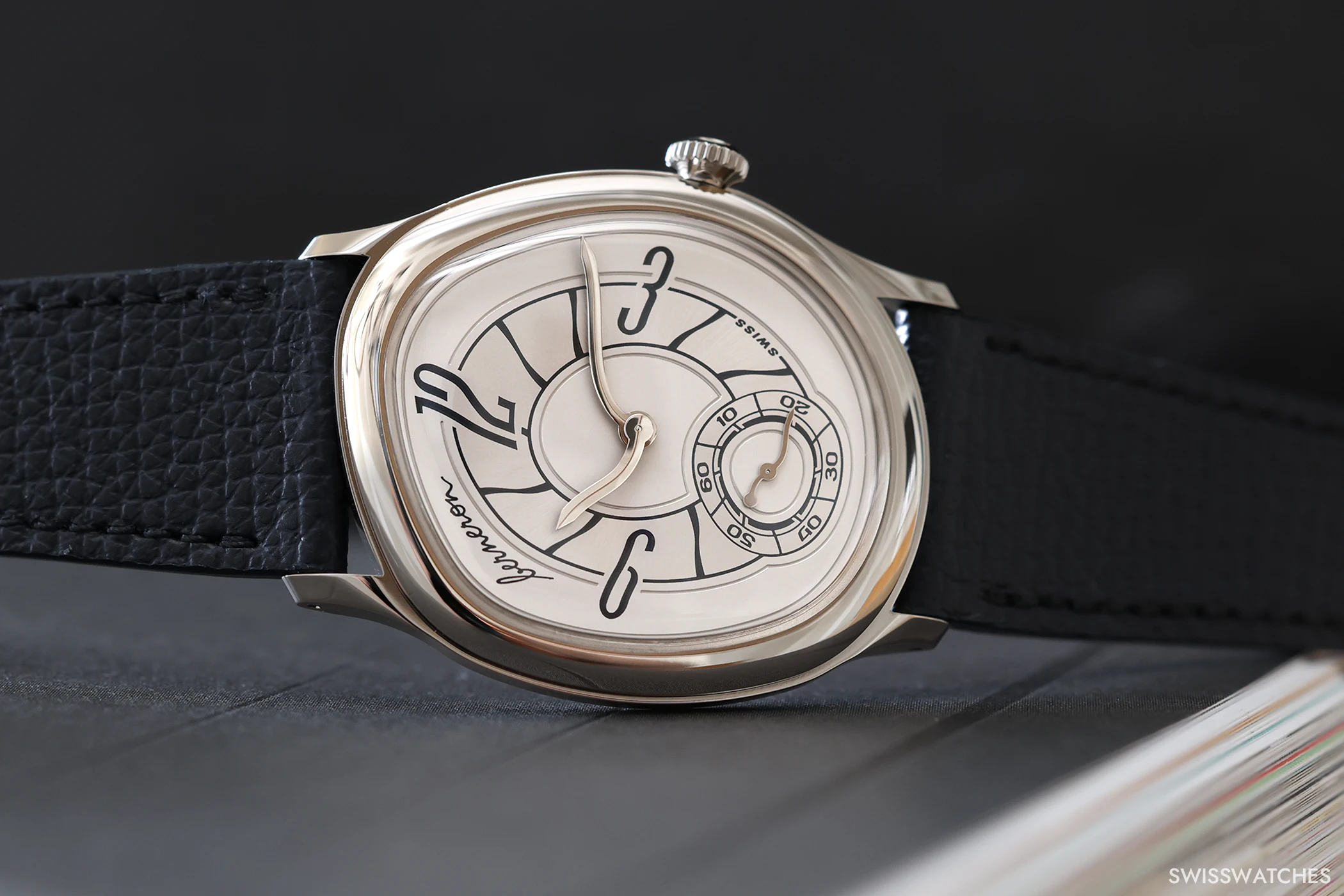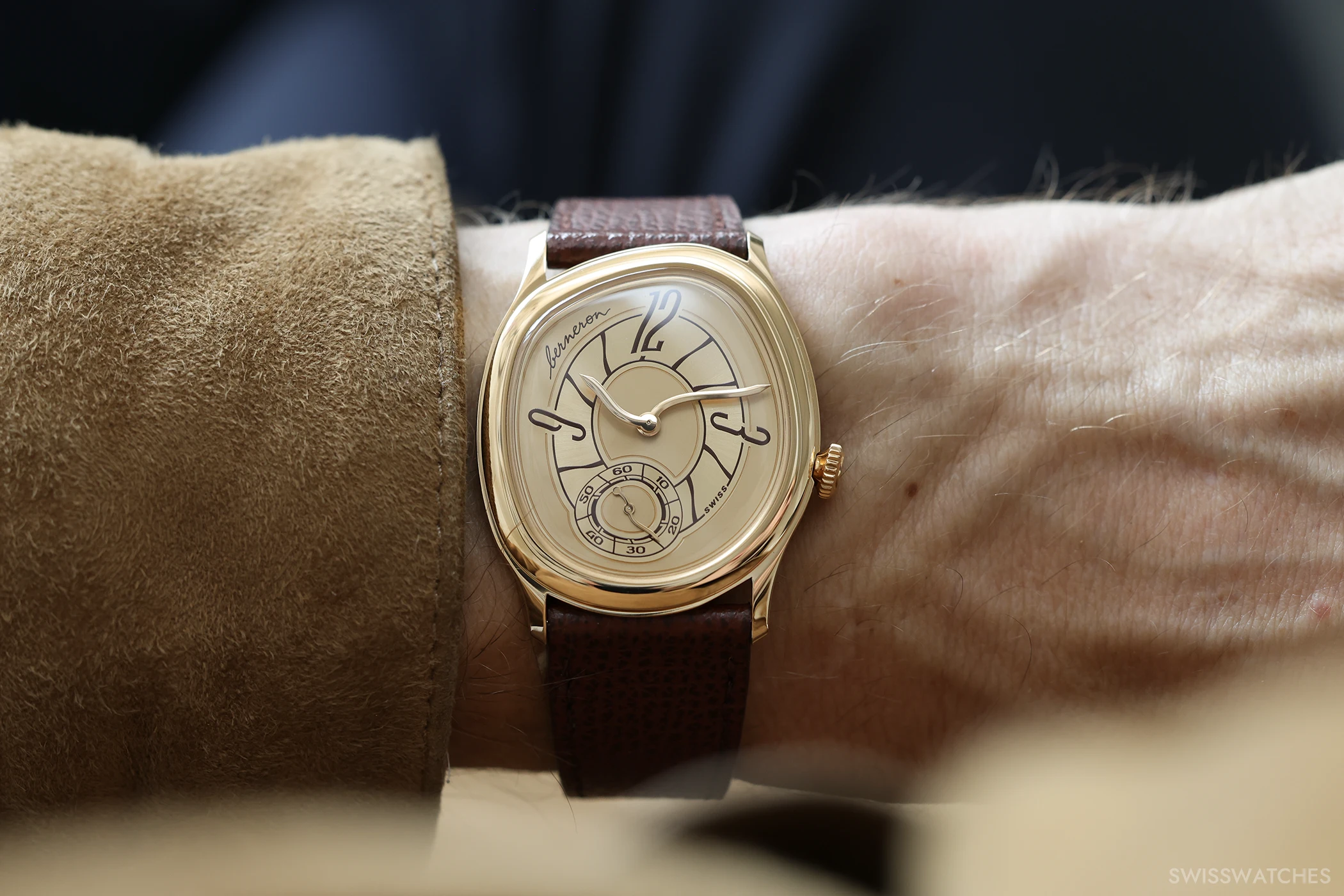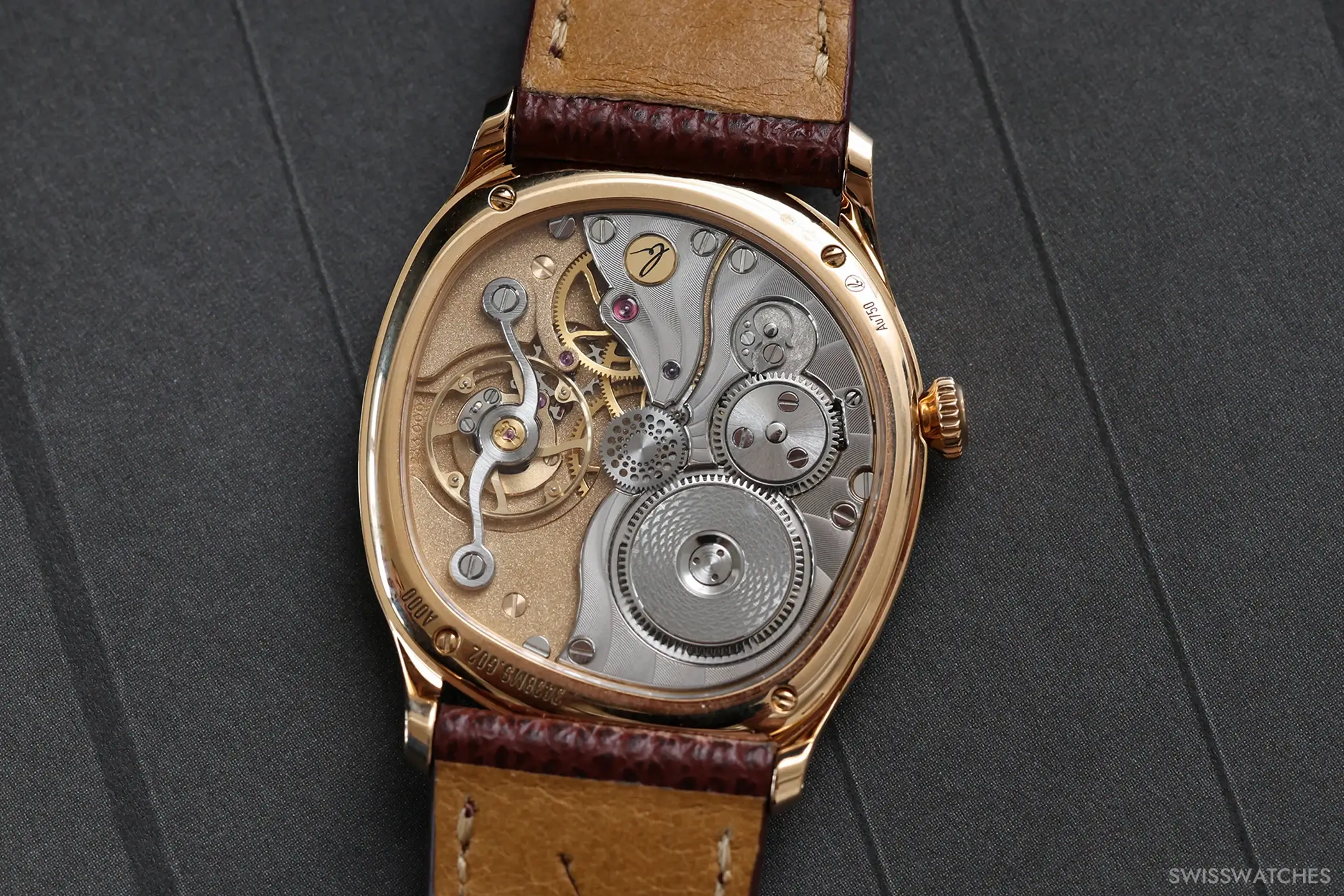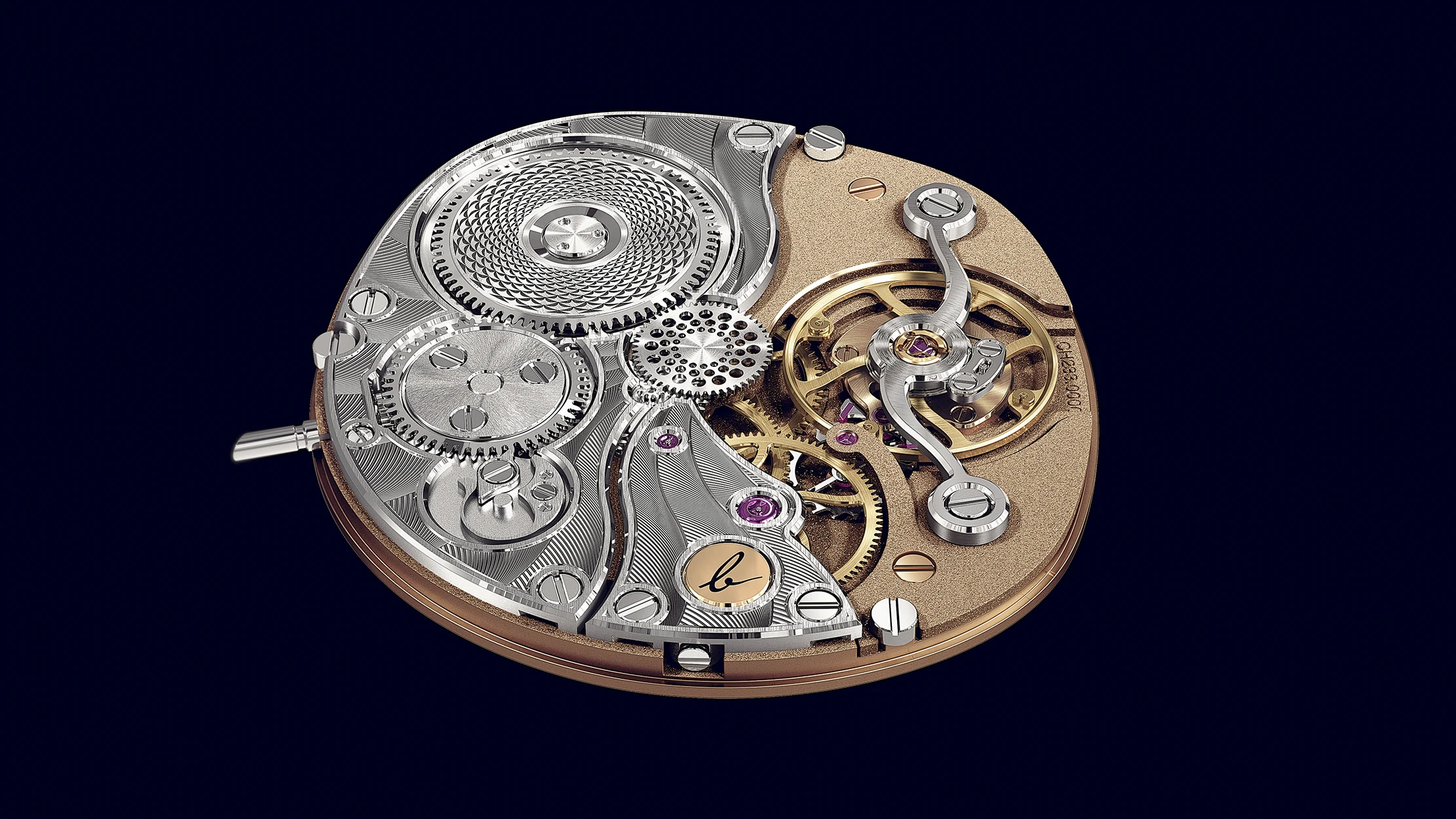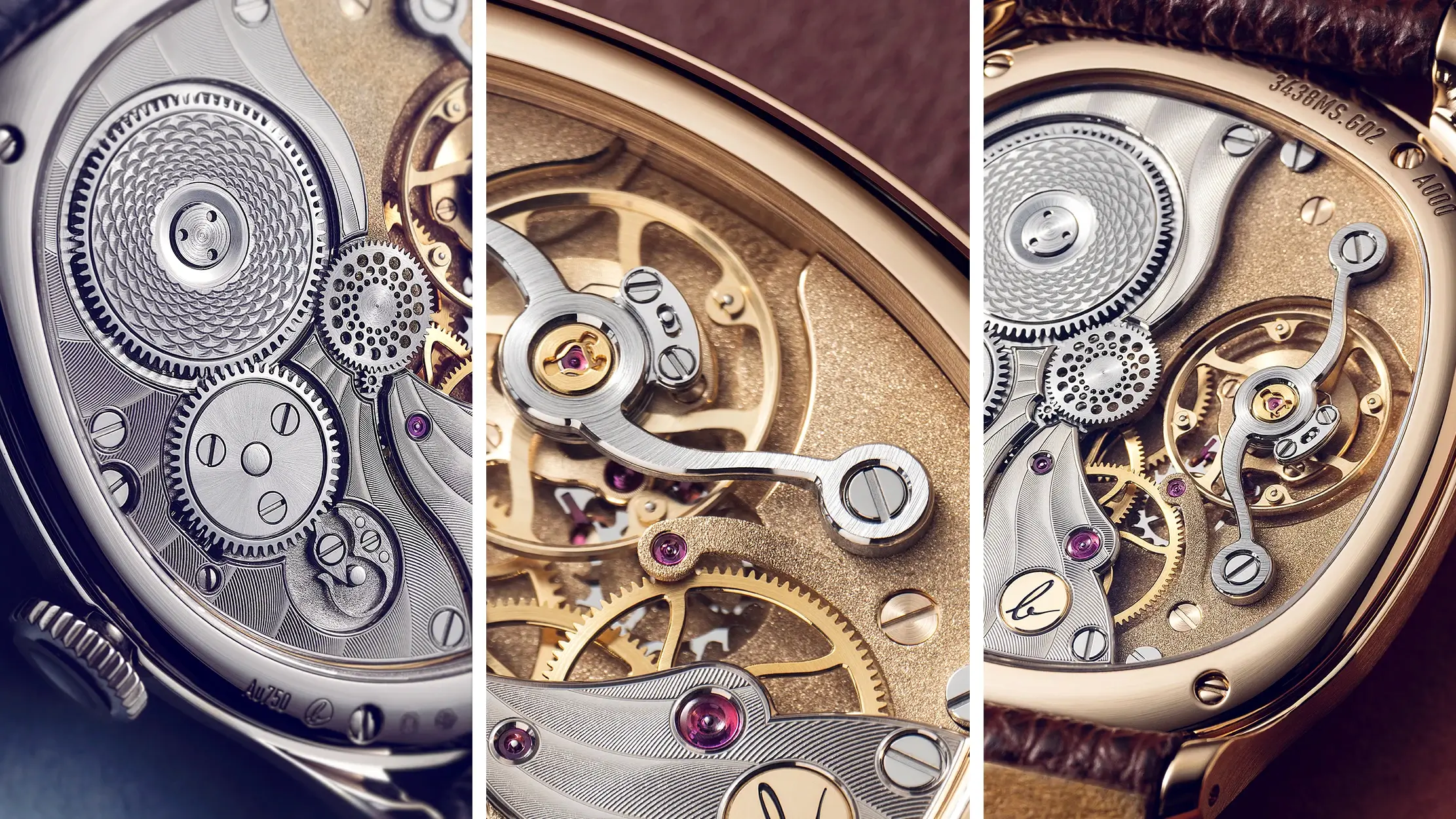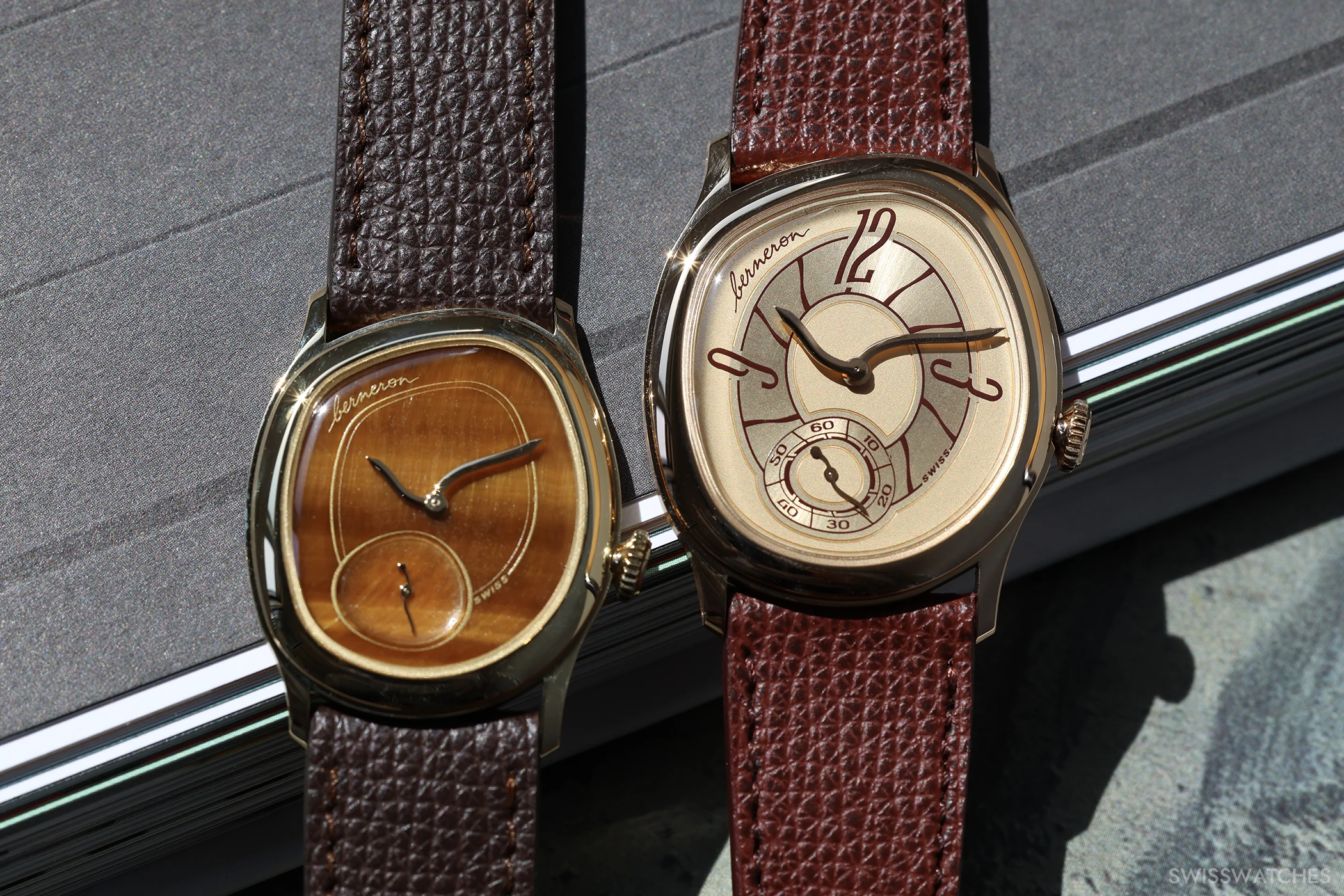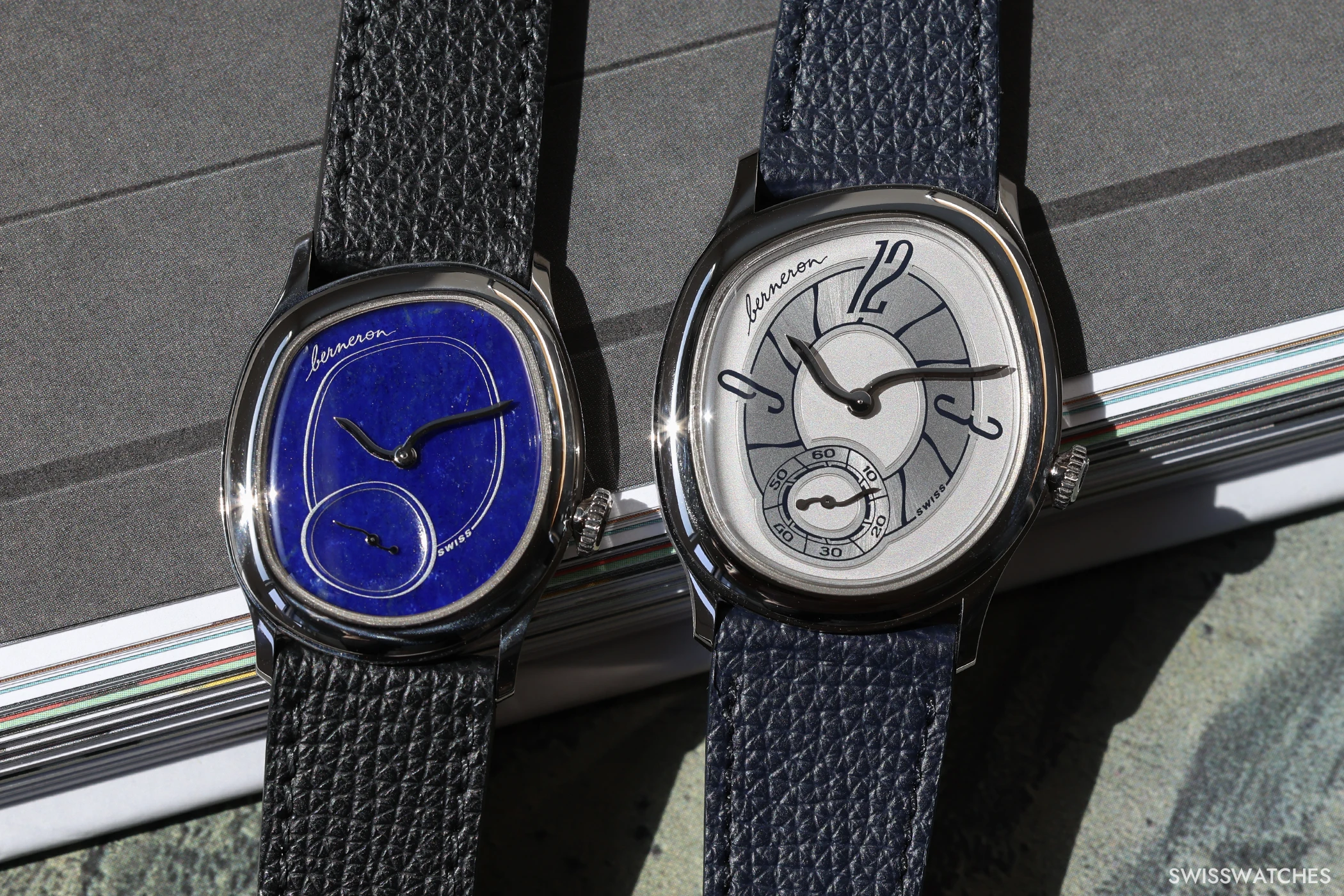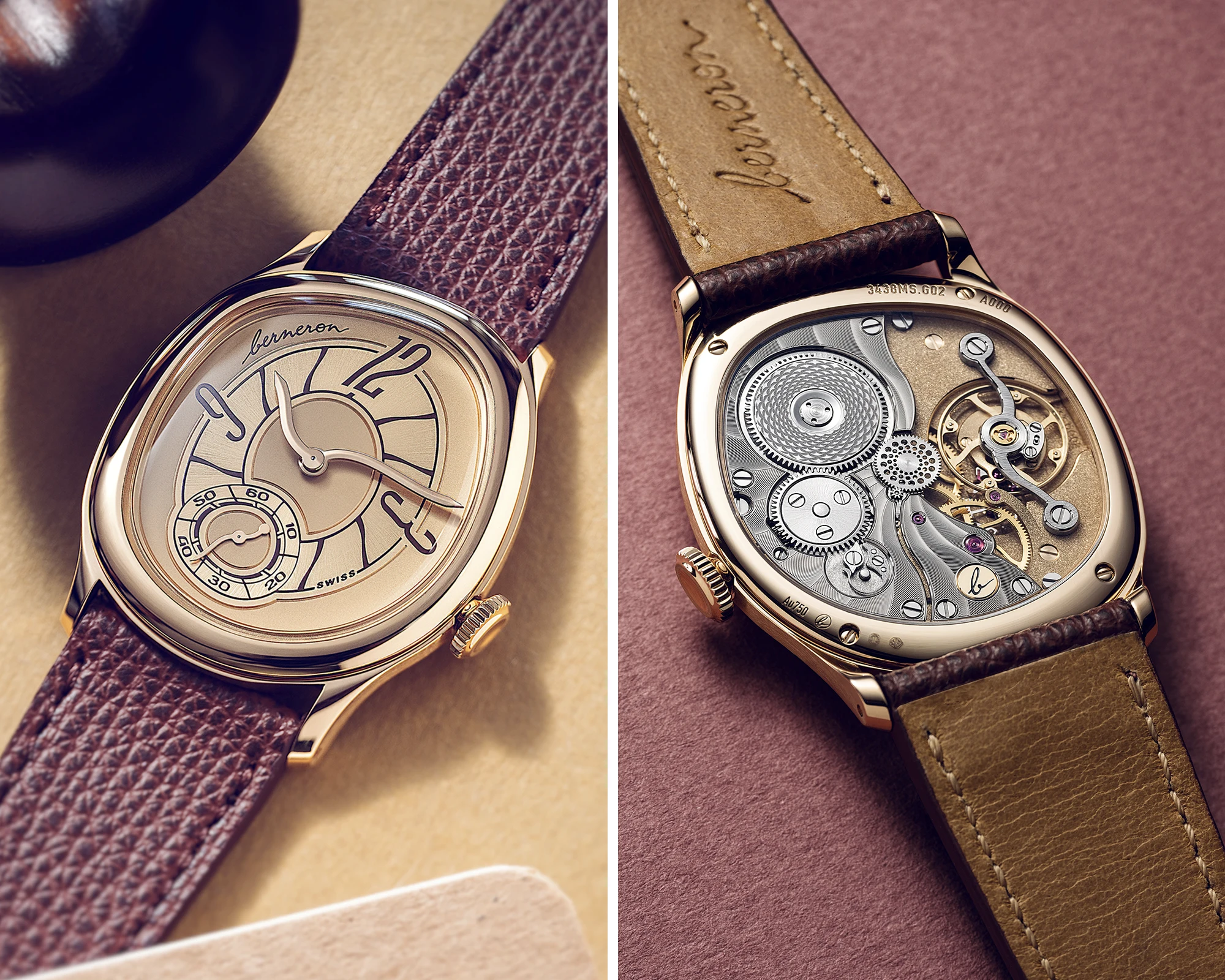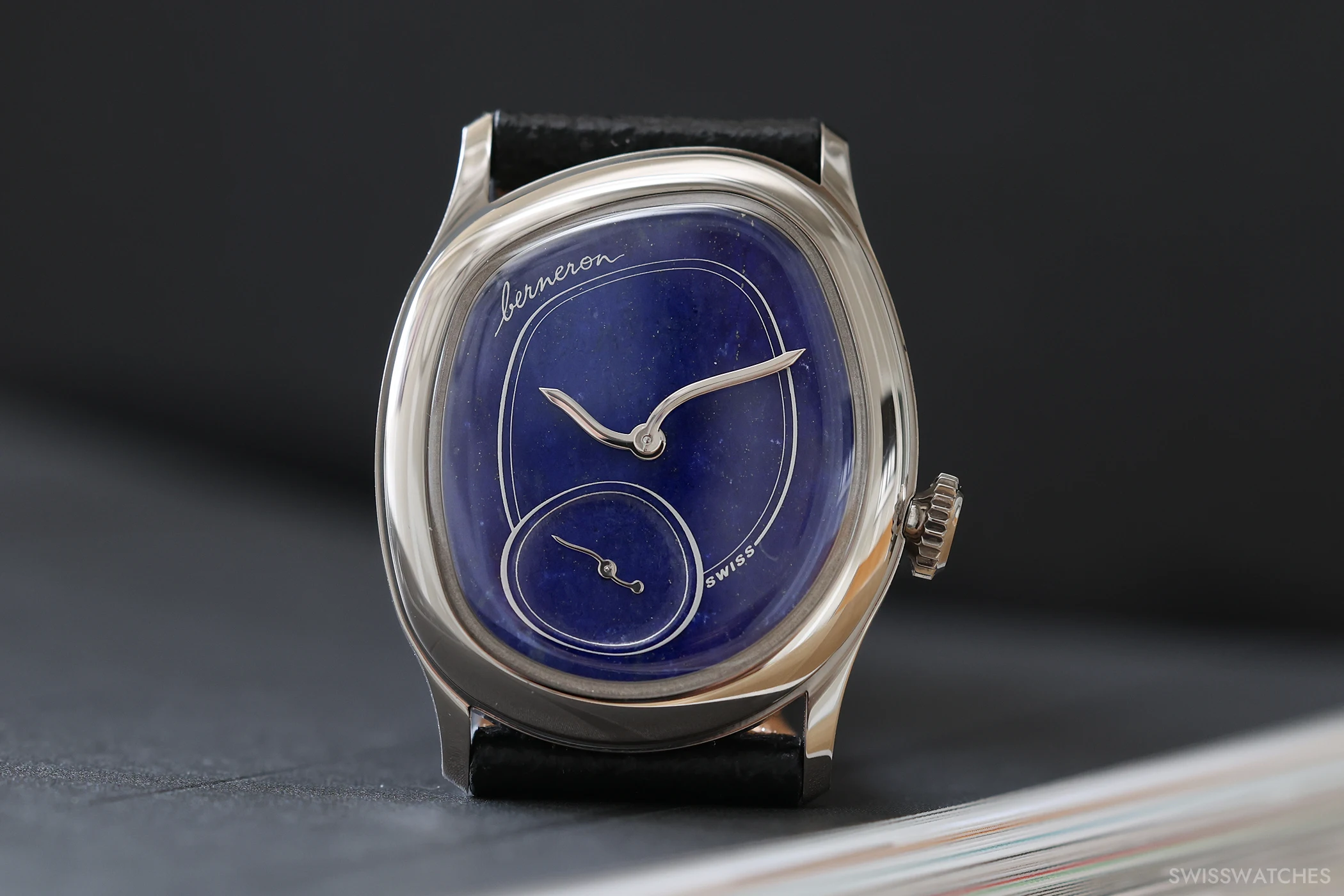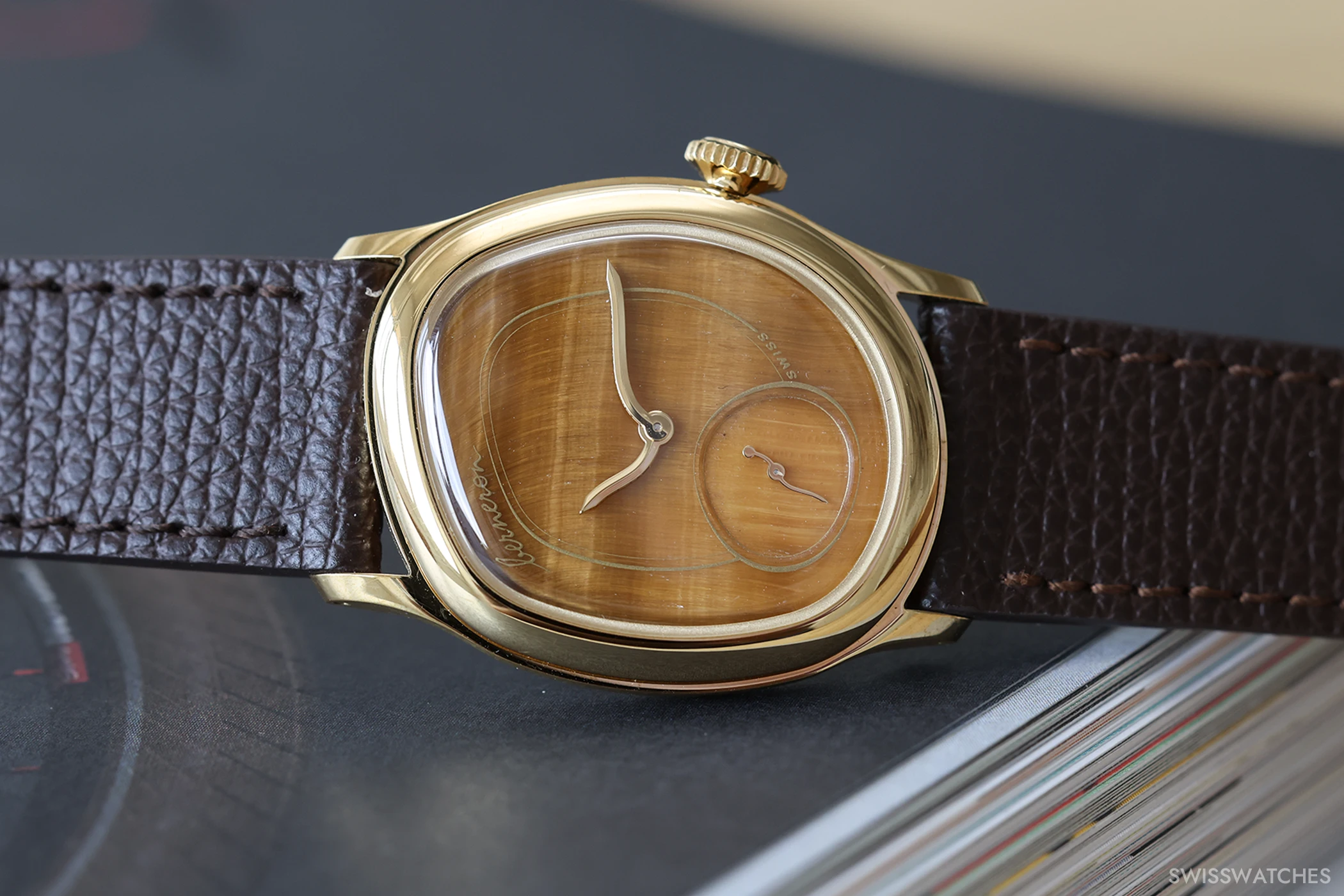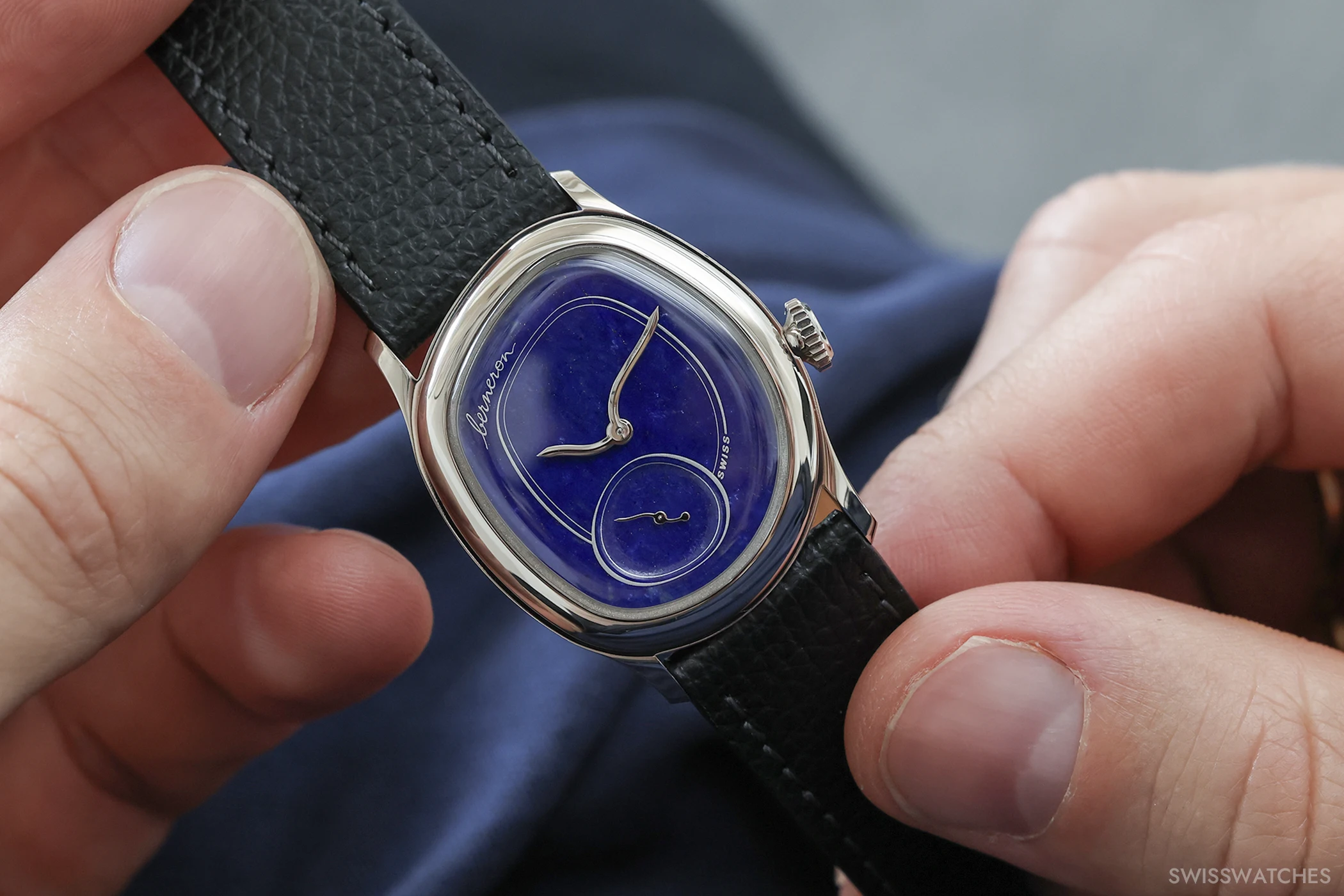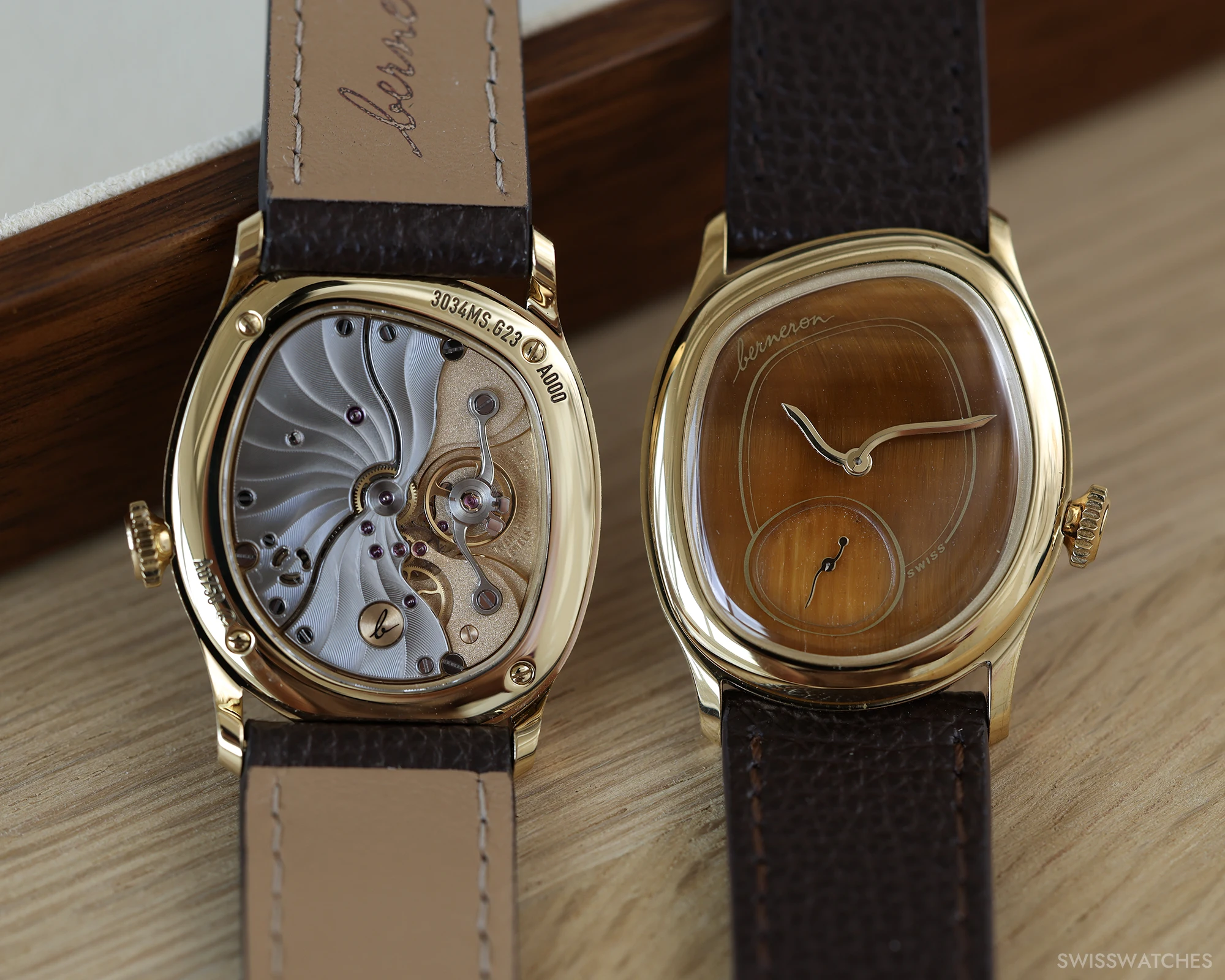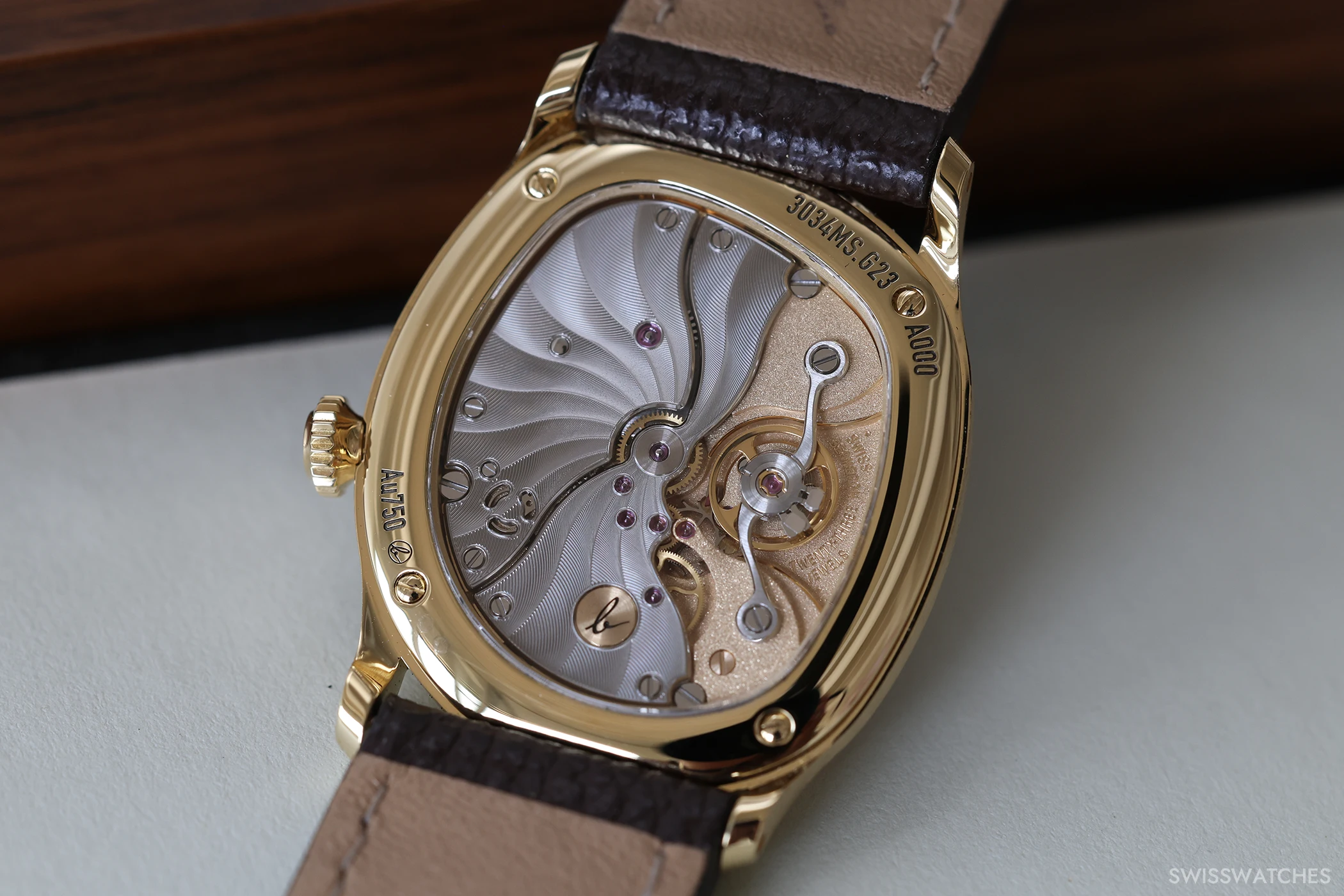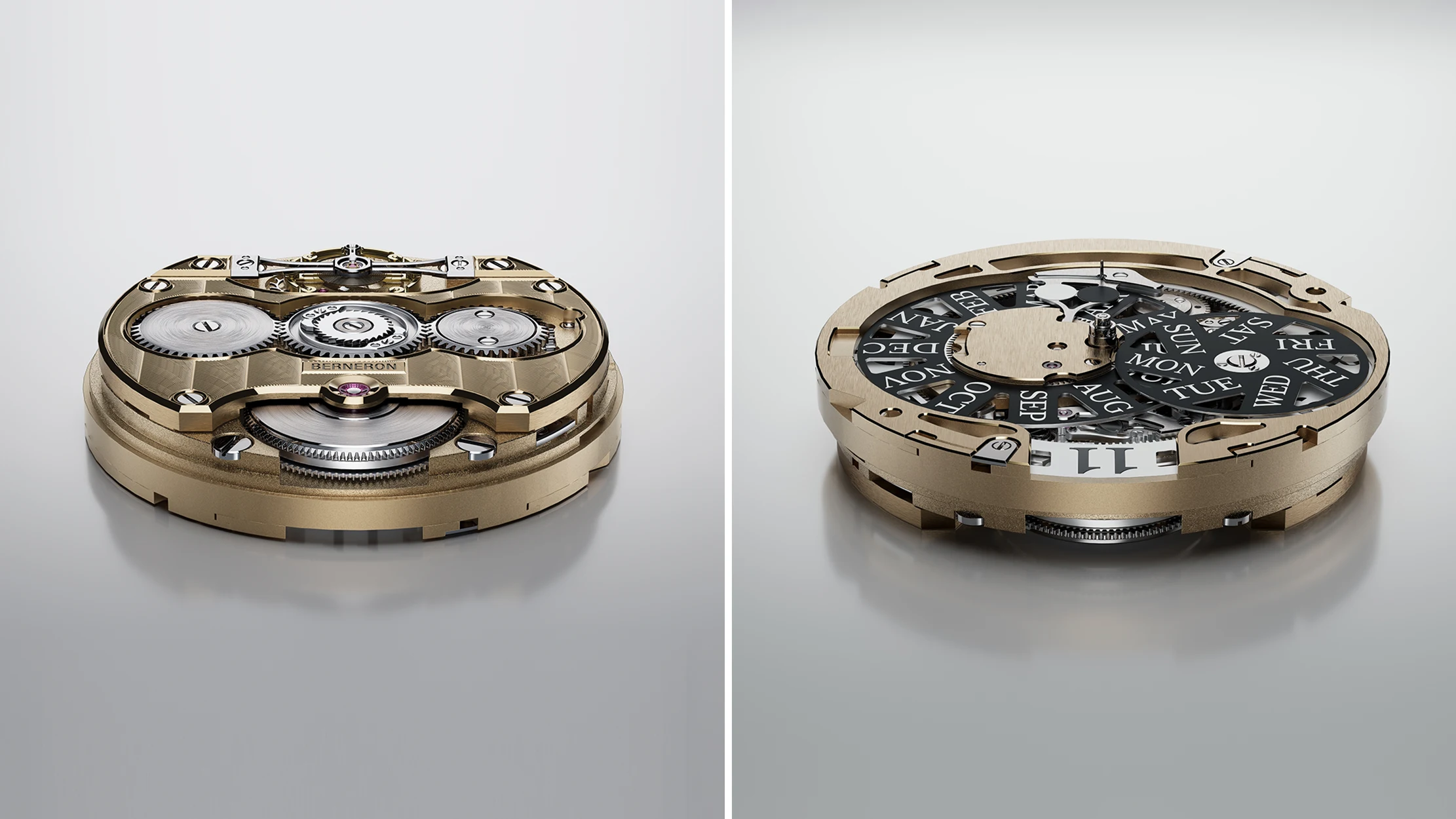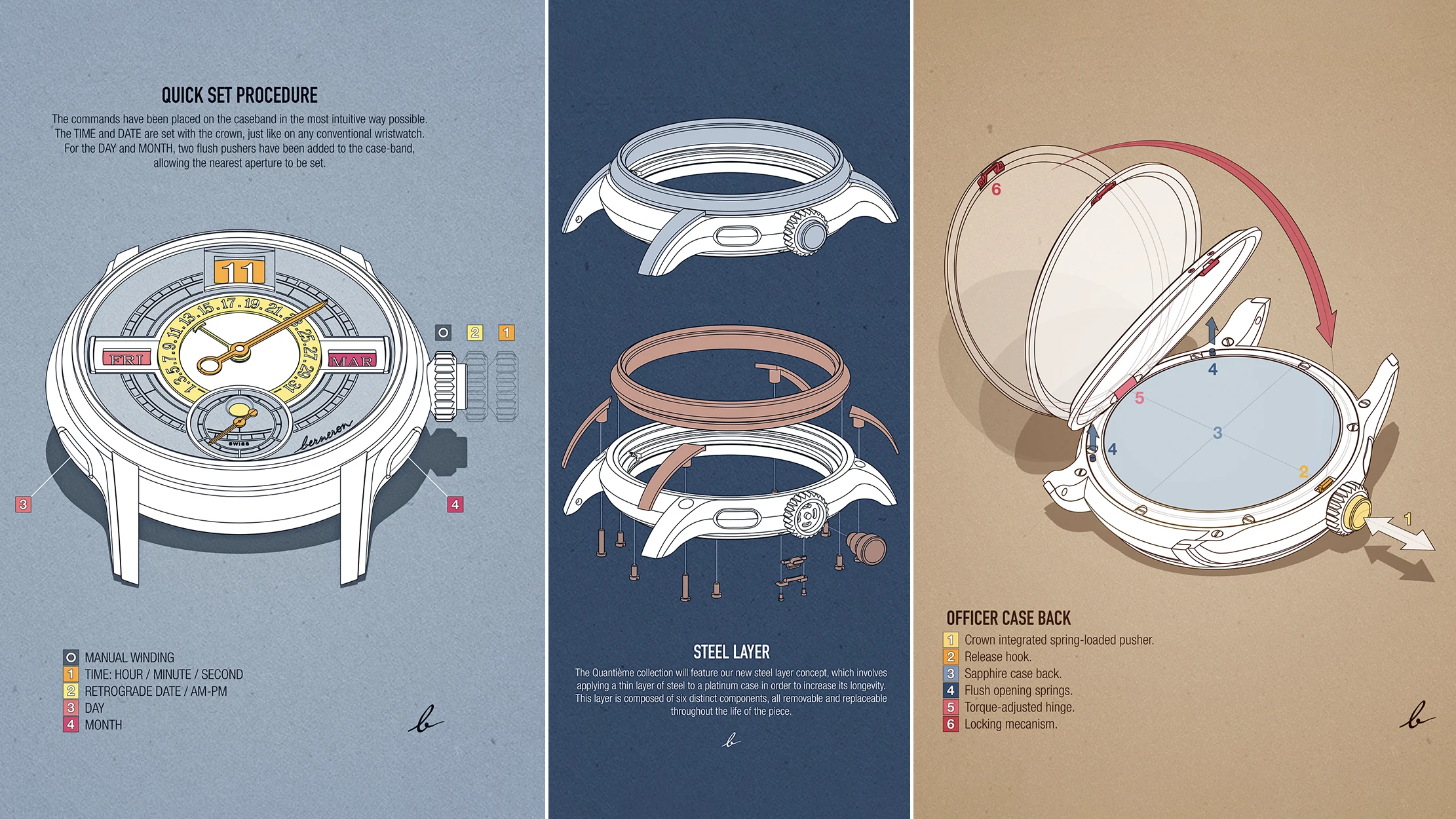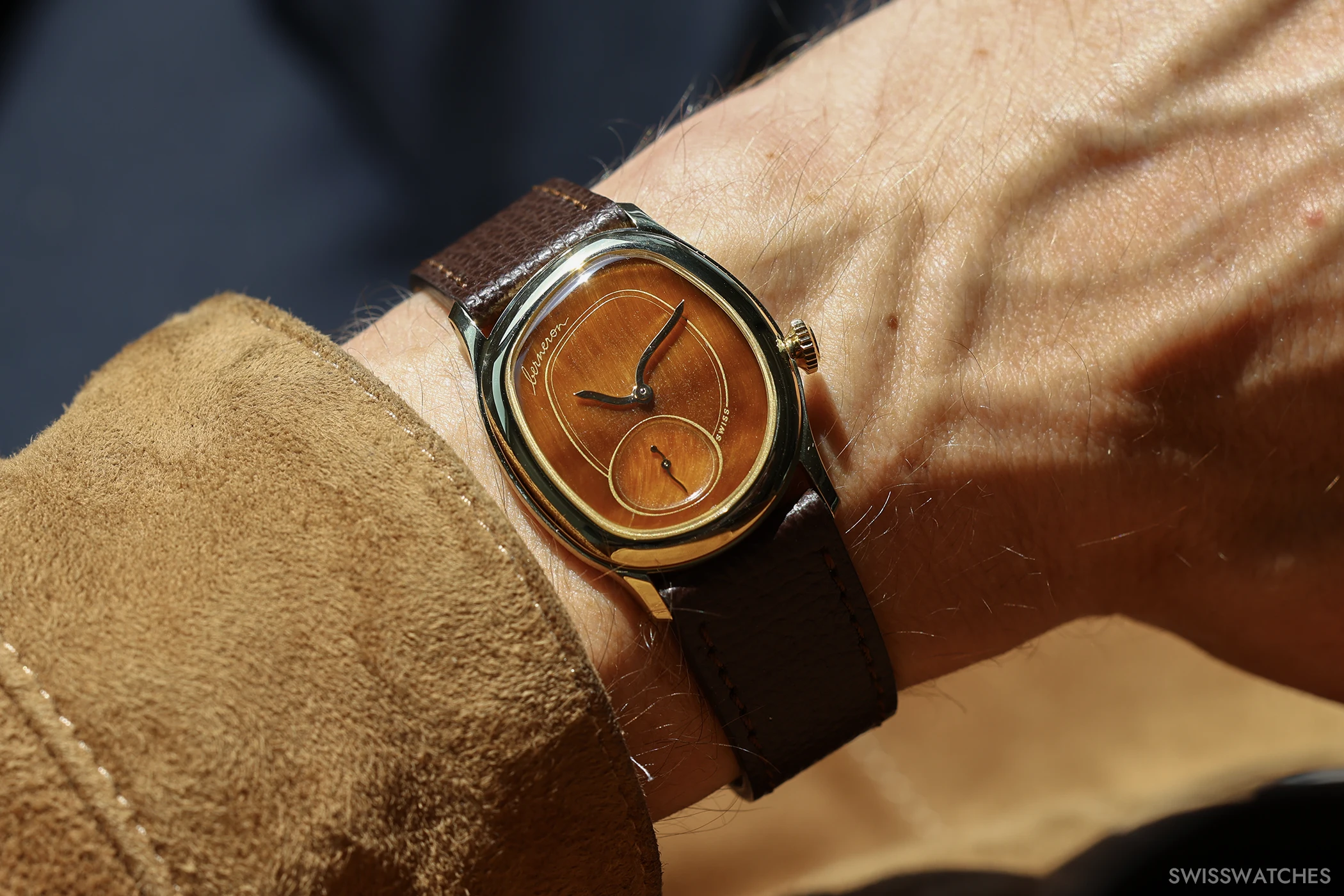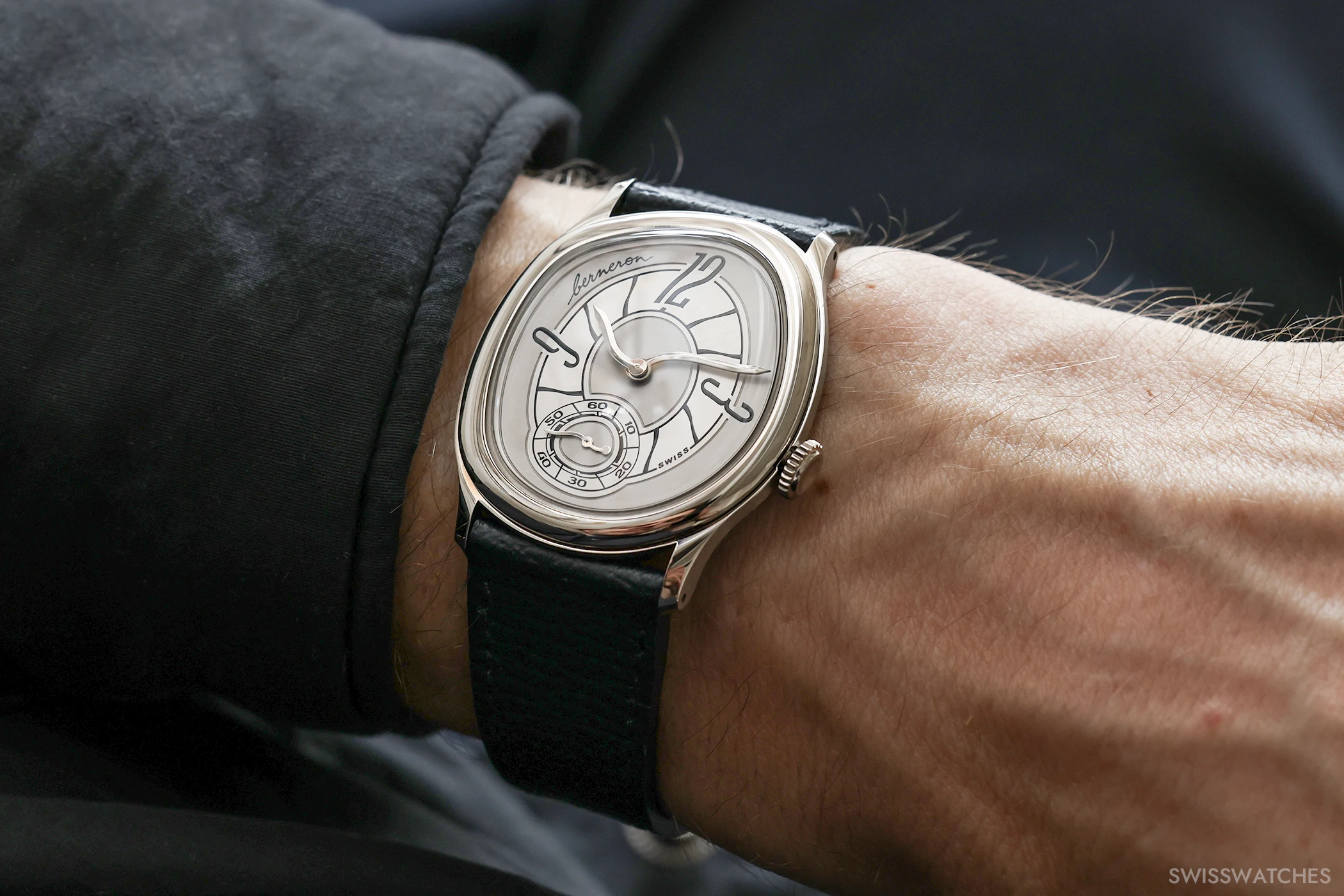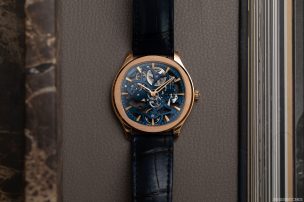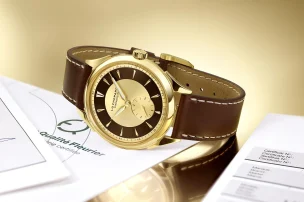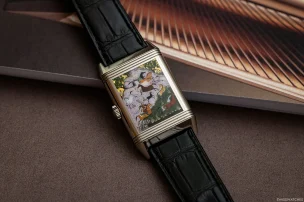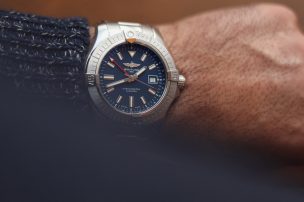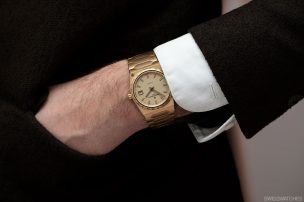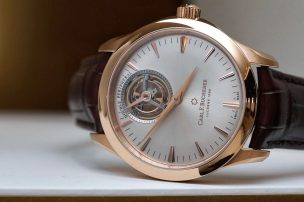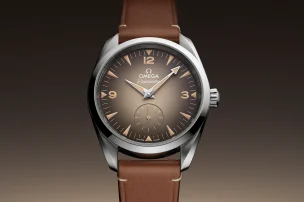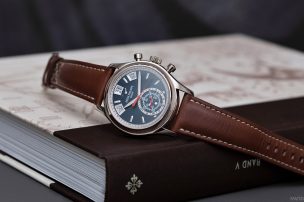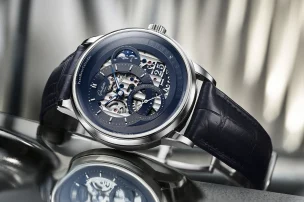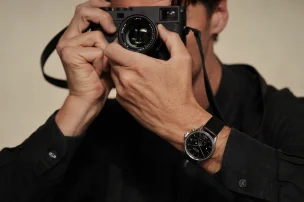
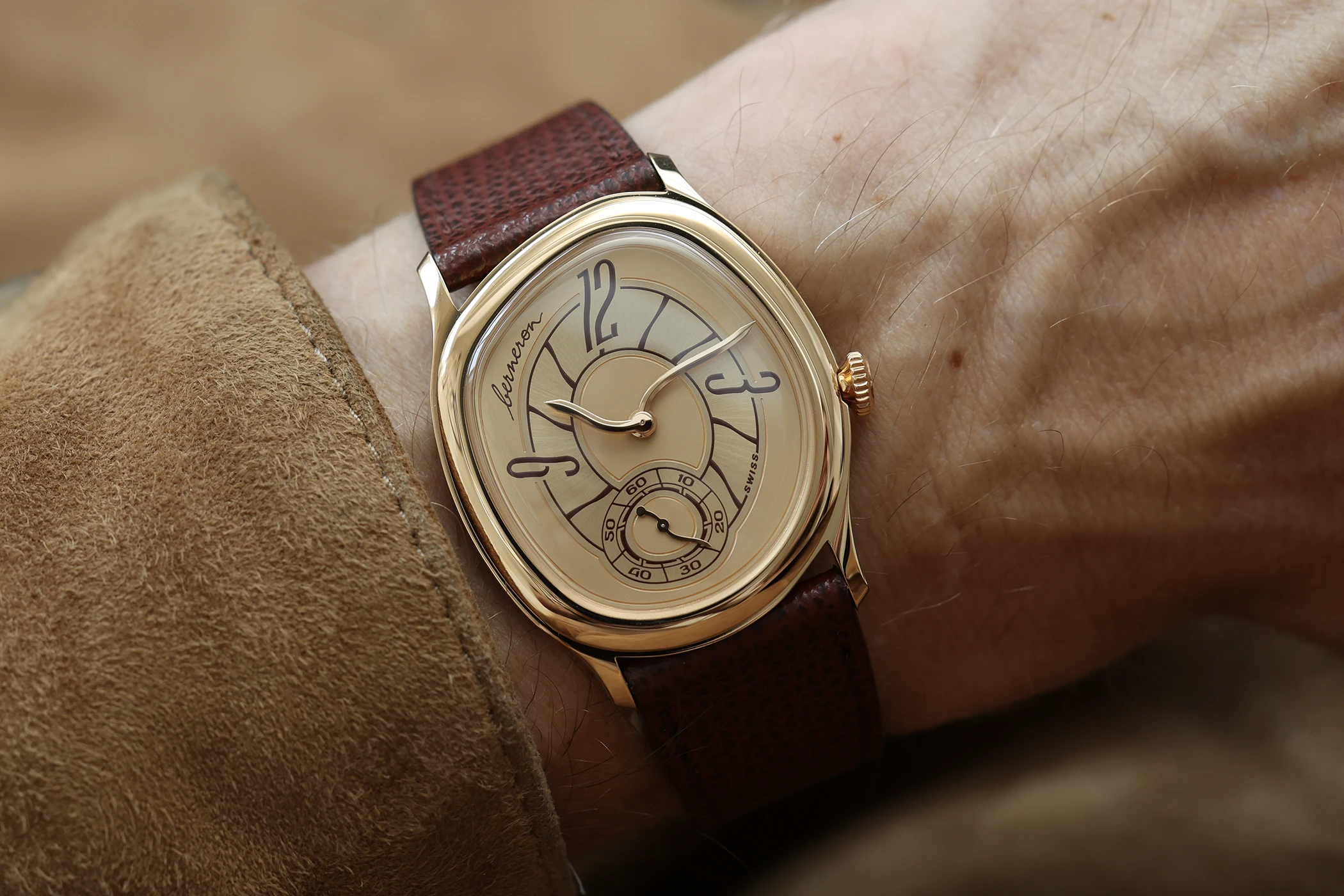
Belle Horlogerie at Berneron
We recently visited Sylvain Berneron, who is causing quite a stir in the collector community with his young brand. His watches are sold out until 2028 – yet success has not gone to his head.
One midsummer’s day in early July, we have an appointment with Sylvain Berneron, founder of the eponymous watch brand. The address we have been given is just outside Neuchâtel, where he and his small team recently moved into a new office. When we arrive at the premises, we have to ask where exactly the company is based. There are no large logo boards on the façade, and no sign of a nameplate. ‘Third floor’, a lady informs us in broken English and a strong French accent. When we arrive upstairs, Sylvain is already waiting for us at the glass door, wearing a white T-shirt, shorts and summer sandals. We had expected more traditional business attire from such a successful entrepreneur, but actually much prefer this laidback appearance.
A good six months ago, we sent Berneron Watches an email via their company website. We had been following the brand for a while and had become increasingly curious. The next morning, we received a personal WhatsApp message from Sylvain Berneron – with an invitation to Neuchâtel in the Swiss Jura. Behind the brand is founder Sylvain, a young man who already has an impressive career to his name. At the tender age of 19, his talent was discovered by BMW, where he first worked as a student trainee and later as a designer before switching to the luxury watch sector in 2016, spending three years as design manager at Richemont. At just 34, he was appointed Chief Product Officer at Breitling, proving instrumental in the redesign of the product portfolio and the enormous success of the brand under the leadership of Georges Kern.
However, the structures of a large company like Breitling also showed him the limits of his creative freedom – and so, in 2022, he plucked up the courage to found his own watch brand, financed entirely from his own funds, saved up over 15 years following his father’s advice to always put aside a third of his salary. Initially, he had wanted to use the money to buy his own little house one day. Many people thought his plans to found a watch brand were utterly insane. His first Mirage model appeared in 2023, showcasing an unusual concept that made the collector community sit up and quickly take notice. Just two years later, his order books were full until 2028. Anyone wanting a Berneron watch today will have to wait at least three years. But who exactly is Sylvain Berneron – and how did he manage to get off to such a meteoric start with such a young brand?
From the automotive industry to the world of horology
For over 15 years, Sylvain Berneron worked as a product designer for major global brands, including well-known manufacturers such as BMW, Porsche and Ducati. This extensive experience in industrial design shaped his understanding of form, function and technical precision before he moved into the watch industry. After three years at the Richemont Group, he was promoted to Creative Director and later Chief Product Officer at Breitling, and was by this point still in his early 30s.
Yet as is so often the case with hyper-creative people, they are – or at least yearn to be – free spirits. They have creative visions, they are often rebellious, and often totally unsuitable for large corporations, as they are subject to certain guidelines in the corporate structures that are non-negotiable.
The founding of Berneron in 2022 was the result of Sylvain Berneron’s deep personal desire to break free from the traditional constraints of watchmaking. As mentioned, when he told those close to him about his plan, most people thought he was crazy. His own watch brand in this highly competitive industry – at a time when he was earning a secure and good salary at Breitling, despite not even being a trained watchmaker?
Sylvain was not dissuaded, and invested 750,000 Swiss francs of his own money in the development of his first movement, which later powered his first collection, the Mirage. The development of the first calibre 233 movement took over two years, as everything had to be reimagined. Sylvain wanted a movement that was as small as possible, without compromising on precision and performance.
Thus he went to Georges Kern, CEO of Breitling, and told him about his project. Then something happened that would probably not have been possible under any other CEO in the industry. Sylvain and Kern agreed that Sylvain would continue to be involved in his creative work at Breitling on a part-time basis and could devote himself to his desire to build his own watch brand on the side. For two years, he had two jobs, working seven days a week, from dawn to dusk.
Design dictated by mechanics
Berneron’s revolutionary approach is based on the realisation that a mechanical movement could work more efficiently if it were freed from the traditional constraints of a round case. The design of the Mirage collection is therefore not arbitrary or purely stylistic; rather, the movement was conceived first, then the case in which it was housed. The functionality, i.e. the mechanics, thus dictates the design of the watch.
The highlight: the asymmetrical design of the movement allows for a larger barrel, which leads to efficient use of space and better technical performance. Increasing the barrel diameter by 15 percent of the space required allowed for a 30 percent increase in barrel diameter, resulting in an impressive 70 percent increase in volume and thus energy storage.
Unlike traditional designs, where shaped dress watches either lacked shaped movements due to high manufacturing costs and low versatility, or whose performance was necessarily subordinate to achieving a certain slimness or shape, Berneron’s aim was to seamlessly combine the best aspects of both worlds.
The organic curves of the case meticulously follow the spirals of the Fibonacci sequence, a mathematical pattern that serves as the inspirational basis for the golden ratio. The surreal molten design of the watch is also somewhat reminiscent of Salvador Dalí’s artistic Art Deco approach. Some even claim that the Mirage has an aesthetic kinship with pieces such as the Cartier Crash and the Patek Philippe Calatrava, which I personally firmly reject, as for me, Berneron’s Mirage has aesthetic design codes all of its own, which are instantly recognisable without the need for a second glance to distinguish it from another model.
The Mirage even has the distinction of being the first entirely asymmetrical watch, with this principle being extended far beyond the case to the hands, dial typography, and even the movement itself. Another ingenious and innovative measure to improve the geometry of the watch (allowing for a significantly thinner case profile) is the inverted hand arrangement, where the shorter hour hand is positioned above the minute hand.
This unconventional design enables the glass to start curving sooner, resulting in the watch having a noticeable 15 percent thinner profile overall. The customised, ‘dancing’, and deliberately non-rectilinear typography of the numerals reinforces the theme of organic curves. Even subtle details such as the slightly angled arrangement of the crown and movement emphasise the watch’s departure from conventional symmetry.
While shaped watches certainly have a history, Berneron’s innovation lies first and foremost in making asymmetry functional rather than merely aesthetic. The design does not merely appear ‘melted’ for visual effect; it is a direct result of optimising the movement geometry for improved performance and efficiency.
Anyone who still thinks Berneron’s decision to quit his well-paid job for an expensive watch brand of his own was mad should take a closer look. His creations could potentially establish a new paradigm in high-end watchmaking, where unconventional shapes are justified by their contribution to technical efficiency, rather than just being artistic whims. Indeed, it should inspire other brands to rethink the traditional limitations of round movements.
The Mirage 38 mm: A result of Berneron’s frustration
In 2023, the Mirage made its debut as Sylvain Berneron’s first watch model. In our interview, he describes it as a ‘result of my frustration with the watch industry’. So many creative approaches; too little room for manoeuvre at his previous employers. The pent-up frustration was first vented in the Mirage 38 mm with its asymmetrical case, which is 33.5 mm wide, 37.5 mm long and 7.00 mm high. Despite – or perhaps one should say because of – its unconventional dimensions, it is extremely comfortable to wear on the wrist.
The solid gold dial has a very unique sector dial layout. It integrates asymmetrical indices and deliberately curved numerals (in particular 9, 12, and 3) printed in brown/Sienna for the yellow-gold version and dark blue/Prussian blue for the white-gold version. An aesthetically integrated, curved subdial counter is used for the small seconds. The gold hands, which are also asymmetrical, are hand-polished as their complex design makes them unsuitable for machine polishing.
The Mirage 38 mm is equipped with a hesalite crystal rather than a sapphire crystal, which is better suited to support the thinner profile made possible by the inverted hands. Additional design elements include an oval offset crown and a caseband that elegantly extends beyond the end of the bracelet.
The first in-house movement: Calibre 233
The asymmetrically designed calibre 233 was conceived by Sylvain’s team and manufactured by Le Cercle de Horlogers. Le Cercle de Horlogers is a highly respected movement specialist in the industry, producing movements for Biver, Louis Vuitton and Trilobe, amongst others.
The movement is remarkably slim, measuring only 2.30 mm in height alongside a 30.0 x 28.0 mm diameter. It features a full 18-carat gold construction for its mainplate and bridges. Steel is used for components that are exposed to more exertion, such as winding and hand movements, to ensure rigidity and optimal torque. The calibre 233 consists of 17 jewels, operates at a frequency of 21,600 vibrations per hour (3 Hz) and features a free-sprung balance and a traditional Swiss lever escapement. The movement also has a large balance wheel reminiscent of pocket watches and a barrel that guarantees a remarkable power reserve of 72 hours, which is remarkable considering the ultra-thin design.
It is well worth noting that all watches are designed, assembled and finished in-house by Sylvain in his small workshop in Neuchâtel. For all movement components, Berneron works with external service providers – the best in the industry – which he does not discuss further for competitive reasons, but which are located within a radius of around 50 kilometres from his workshop. Berneron watches are not only 100 percent Swiss Made, but also local.
The elaborate finishes such as hand polishing and bevelling, guilloché, colimaçonnage, cerclage (on the hour wheel) and traits tirés are done in-house by his artisans. Some pieces feature snailed decoration, while others have matte surfaces.
For his first creation ‘Mirage Sienna’, Sylvain was directly honoured with the prestigious Audacity Award at the Grand Prix d’Horlogerie de Genève (GPHG) 2024. Afterwards, Sylvain invited not only his small team but also all his suppliers to dinner to celebrate the success together.
Gold movements
Berneron’s uncompromising approach is to use 18-carat gold throughout the entire watch. This method is called ‘Tout d’Or’ (or all gold in English), but is hardly ever used today in the increasingly industrialised watchmaking industry. F.P. Journe and Parmigiani still produce gold movements, for example. However, Berneron’s calibre 215 in the Mirage 34 mm (more on this in a moment) is currently the smallest gold movement in the industry.
The case, bezel, middle case, caseback, crown, spring bars, clasp and clasp spring bars are made from Au750 (18 carat gold in 4N colour, a warmer shade between yellow and rose) or Pd210 (18-carat white gold). The dial is also made of solid 18-carat 4N or white gold, satin-finished and polished, as are the hands. In the movement, the mainplate, the anchor bridge, the minute bridge, the escapement bridge, the barrel bridge, the seconds bridge and the ‘B medallion’ are made of Au750 (18 carat 4N gold) or Pd210 (18-carat white gold).
Only parts that are exposed to higher exertion, such as the winding gears and the balance bridge, are made of 316L stainless steel, while the timing gears are made of 1N gold-plated brass.
Mirage 34 mm
One year later, the Mirage 34 mm appeared – a smaller version of the original Mirage in 38 mm. Its compact case measures 30 x 34 mm with a constant thickness of 7 mm. Also novel is the transition from the sector dial of the Mirage 38 mm to exceptional hand-crafted stone dials, particularly in tiger’s eye and lapis lazuli.
As far as we know and as Berneron confirms, there is currently no one in the watch industry who can offer hand-carved subdials that are chiselled directly into the thin stone. The residual thickness of the subdial is a mere 0.35 mm, compared to 0.7 mm for the rest of the dial.
Calibre 215
Calibre 215 is the second manual-winding movement from Berneron that has been specially and exclusively developed for the Mirage 34 mm, although in this case not with Le Cercle de Horlogers, but with another Swiss supplier that Berneron does not wish to name. This new calibre is even thinner than its predecessor, measuring just 2.15 mm in height. It naturally continues the ‘all-gold construction’, with mainplates and bridges made of 18-carat gold.
The Calibre 215 operates at a frequency of 25,200 vibrations per hour (3.5 Hz), offers a robust power reserve of 72 hours, and contains 23 jewels. To achieve this smaller size, some strategic technical adjustments have been made: the balance wheel is no longer free-sprung, and the hand arrangement is not reversed (as the additional gearing would have made the movement too thick). Nevertheless, the asymmetrical design of the movement allows for a large barrel even in the smaller calibre for greater energy efficiency.
Prioritising innovation
Sylvain only develops new movements if he sees technical added value in them. The two Mirage calibres are impressive proof of this – and his plan for his movements is already set for the next ten years. He would like a chronograph, but there is currently nothing that he would optimise technically, so he has left it alone. In September, however, Sylvain will present his second watch collection, the Berneron Quantième Annuel (annual calendar).
Although he has certainly taken some inspiration from Patek and Lange, Sylvain has come up with a new, user-friendly concept. The watch is characterised by a clear, logical dial layout for time and date (up-down or left-right). It has a large jumping hour at 12 o’clock, followed by minutes and small seconds, as well as horizontally arranged day and month displays and a slightly offset AM/PM display. An innovative feature is the instant jump mechanism for the hour, day, month and AM/PM display as well as a ‘safety mode’ that corrects incorrect date settings.
Also new is the retrograde date, which jumps to three different lengths, and the 40 percent larger day and date window. The platinum case (38 x 10 mm) is fitted with a steel bezel, lugs and pushers to protect high-wear parts of the watch – another completely new approach in watchmaking. Although the movement is round for the first time, it is also made entirely of gold and consists of 450 components, 400 of which are customised.
A ride to lunch in an old VW Passat Variant
With his team and eight employees, Sylvain is currently able to produce around 100 watches a year. The Mirage 38 mm is priced at CHF 65,000 excl. VAT, and the Mirage 34 mm at CHF 54,000 excl. VAT. Sylvain has drawn up a ten-year plan, including quantities and various new calibres that will be launched by 2032. By then, he wants to produce 600 watches a year and the team should grow to 35 employees.
He also has watch connoisseurs, collectors, and experts such as Roni Madhvani, Laurent Picciotto and Auro Montanari to thank for the fact that his watches are sold out until 2028; they love his creations and promote his entrepreneurial spirit, broadcasting it virtually to the world via social media. Sylvain hardly advertises himself at all – there are no marketing or PR budgets at Berneron. Even the anonymous watch expert behind the Instagram account Velociphile, who is revered and even feared in the watch industry for his extreme technical understanding of movements and precise analysis of complex mechanisms, has praised Berneron’s innovation in movement architecture in several posts, which is pretty rare and certainly an accolade from the social media bubble for Sylvain.
But his success doesn’t seem to have gone to his head. We got to know a very down-to-earth, modest and extremely focused and visionary young man, who took us out to lunch in his somewhat outdated VW Passat Variant. No BMW SUV, no Tesla, no Porsche. Sylvain doesn’t live the high life, but invests every cent he earns in his watches, which he calls Belle Horlogerie; the name given to fine watchmaking in the region around Neuchâtel. ‘Haute Horlogerie sounds a bit snobby,’ says Berneron. His words could not have more clearly reflected the attitude we came to recognise in Sylvain that day.
